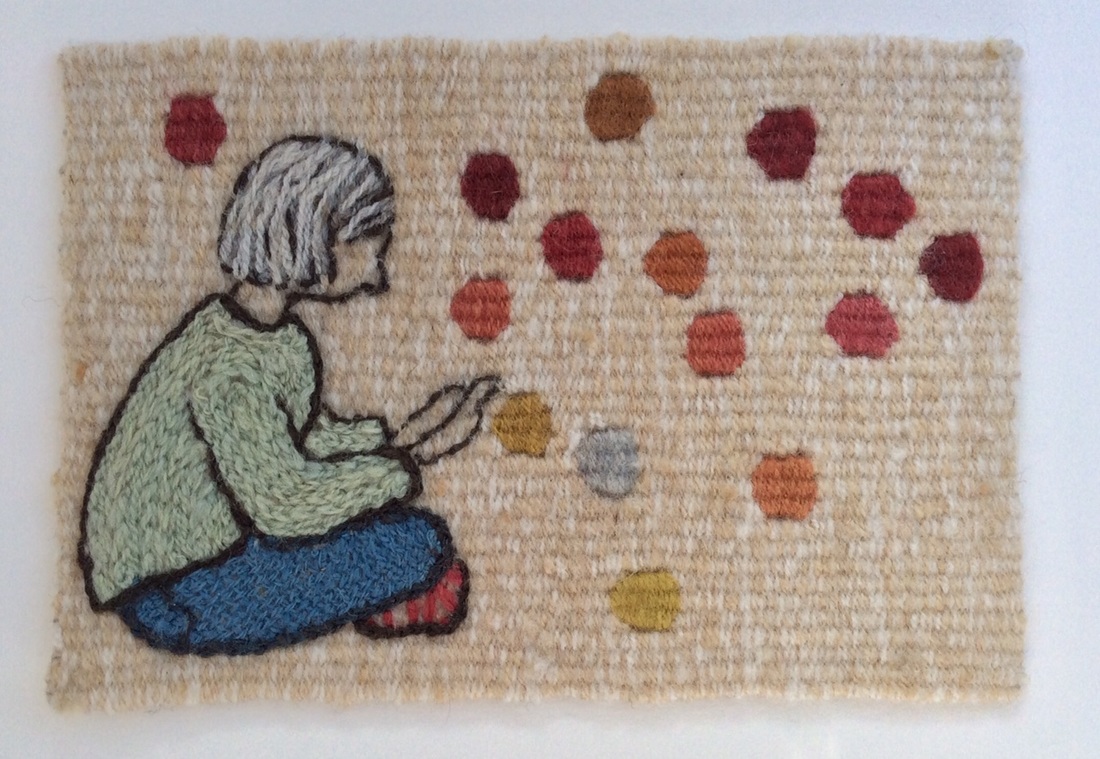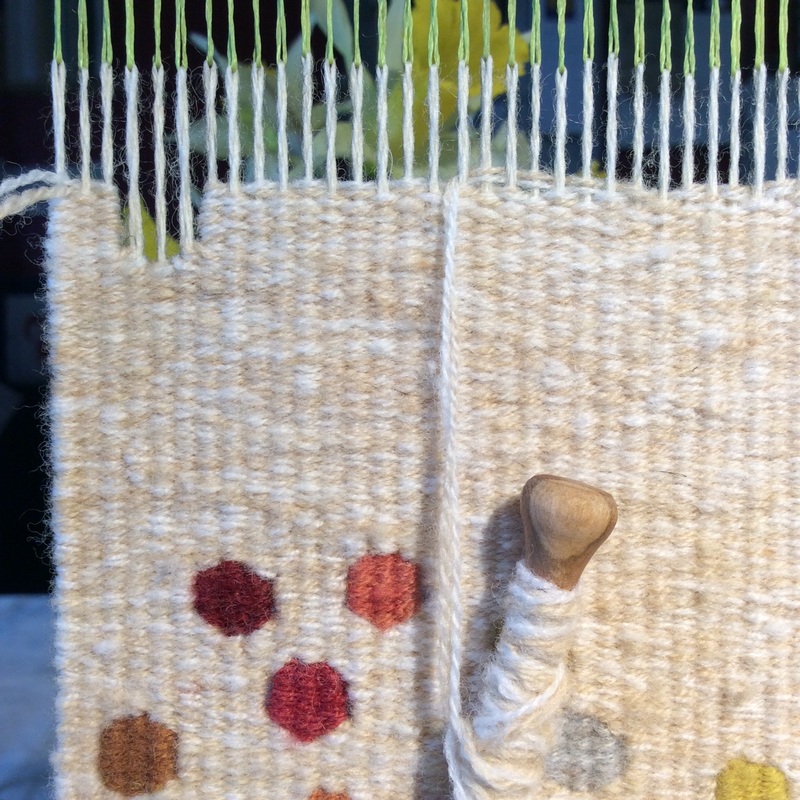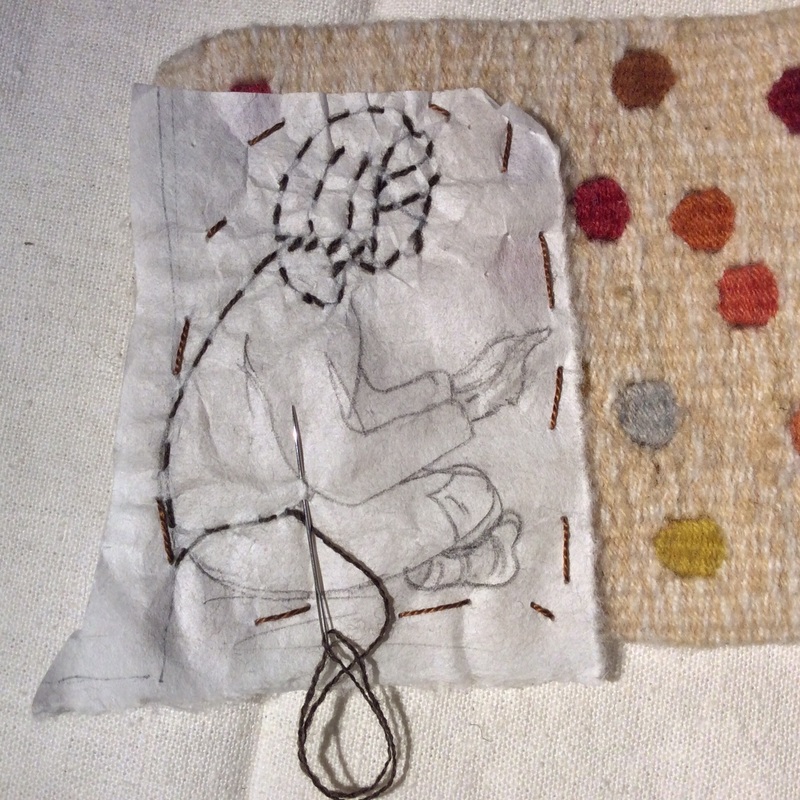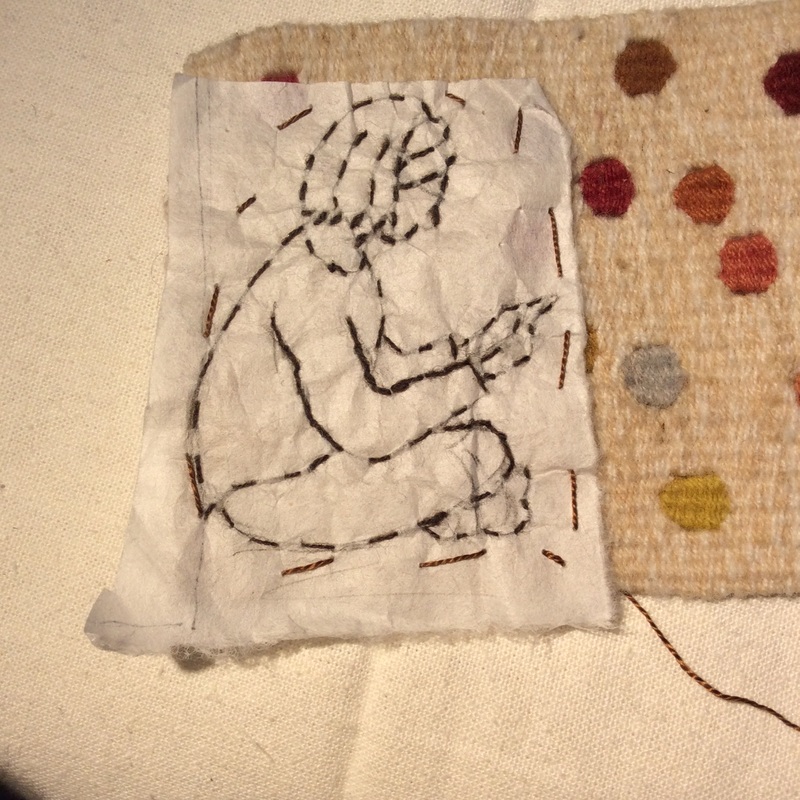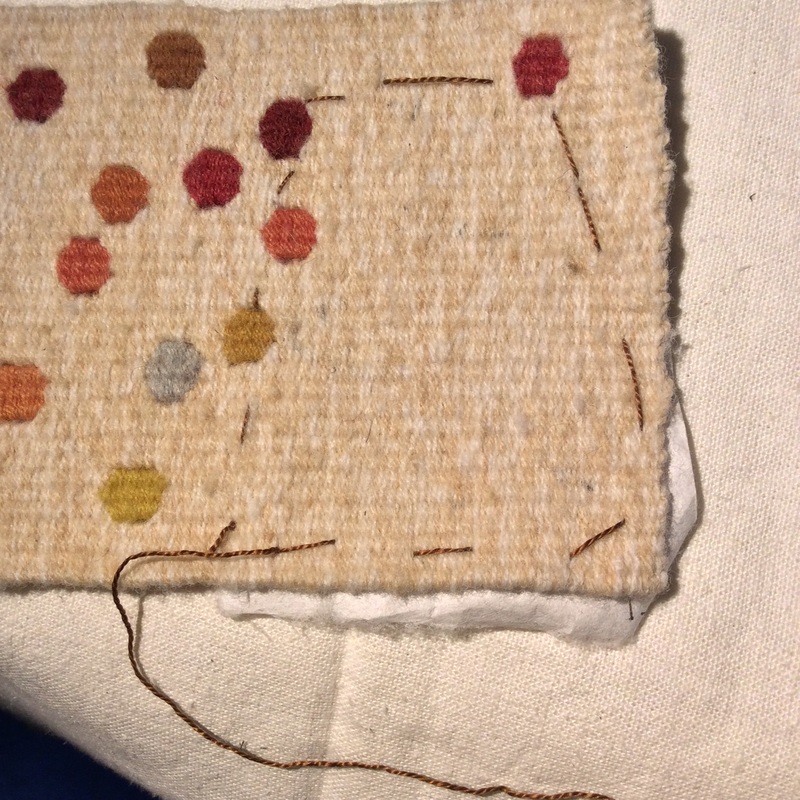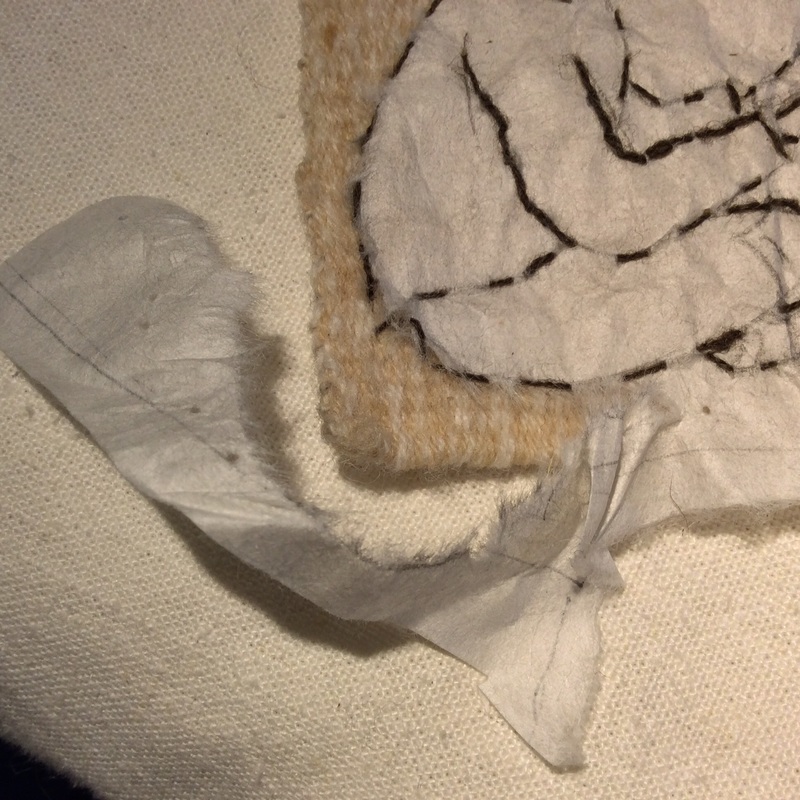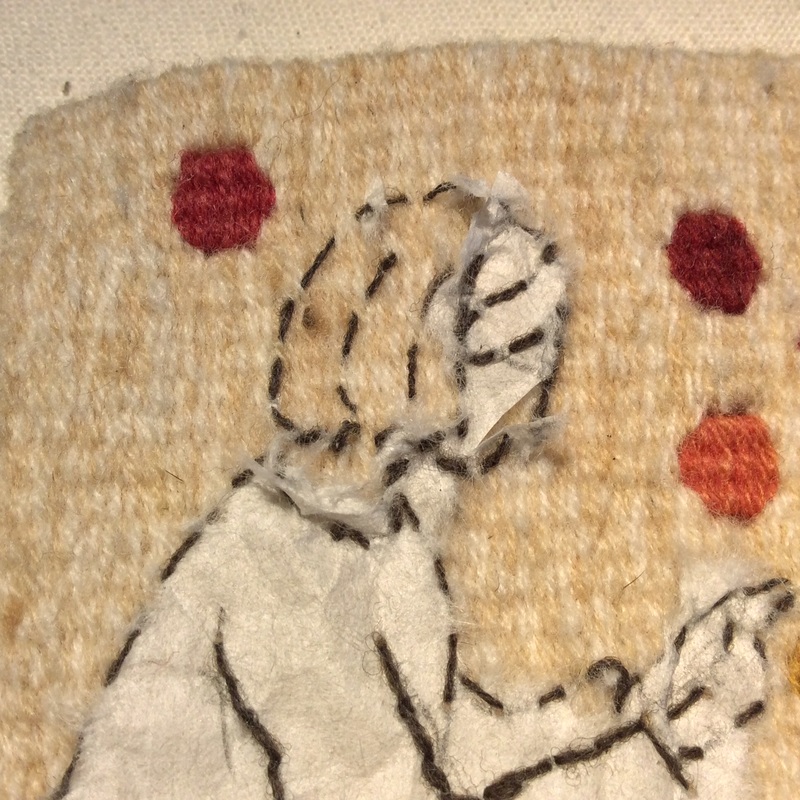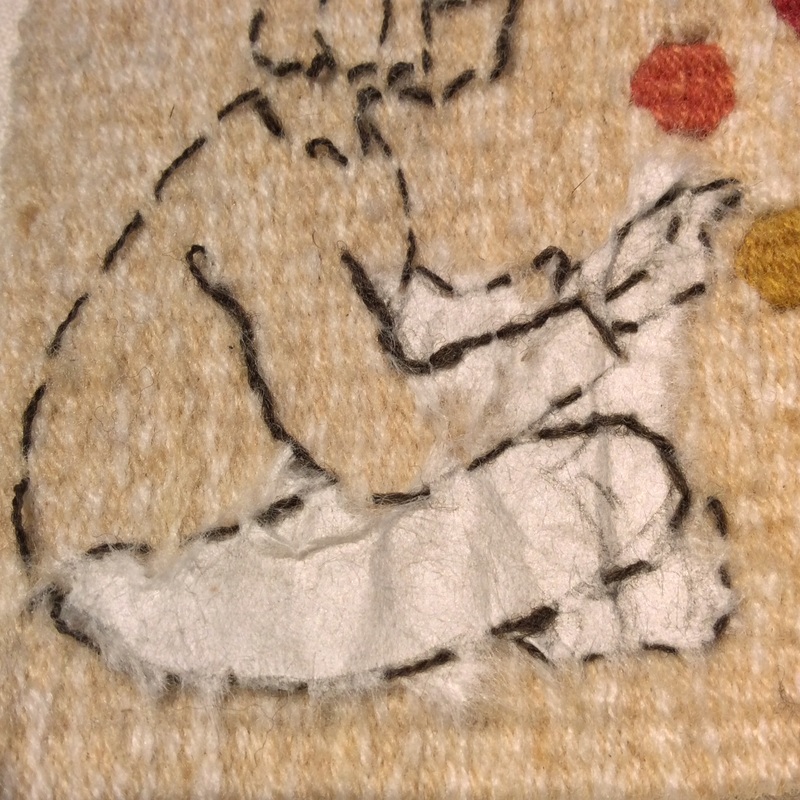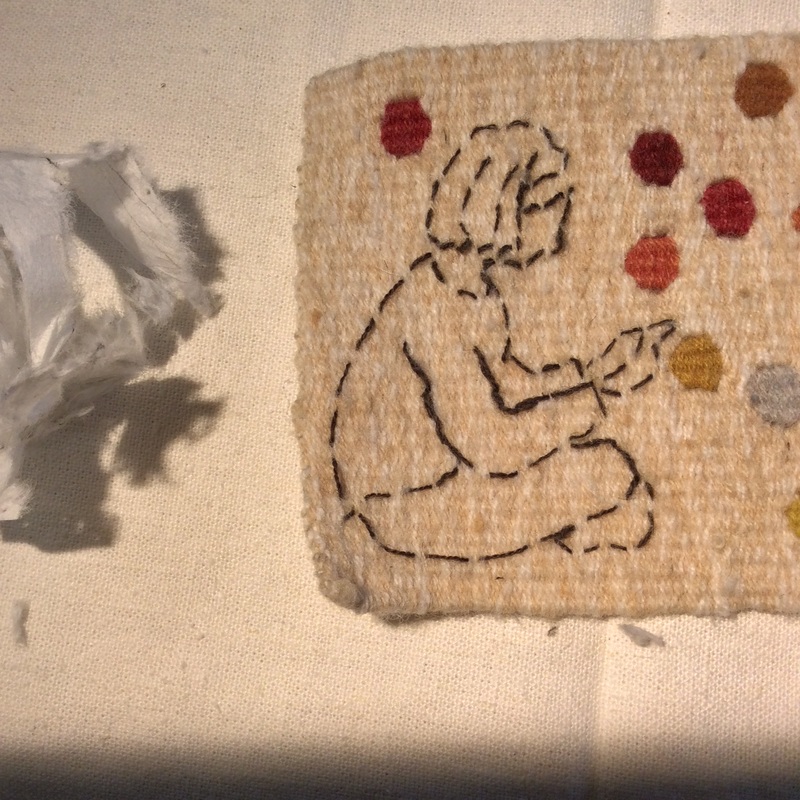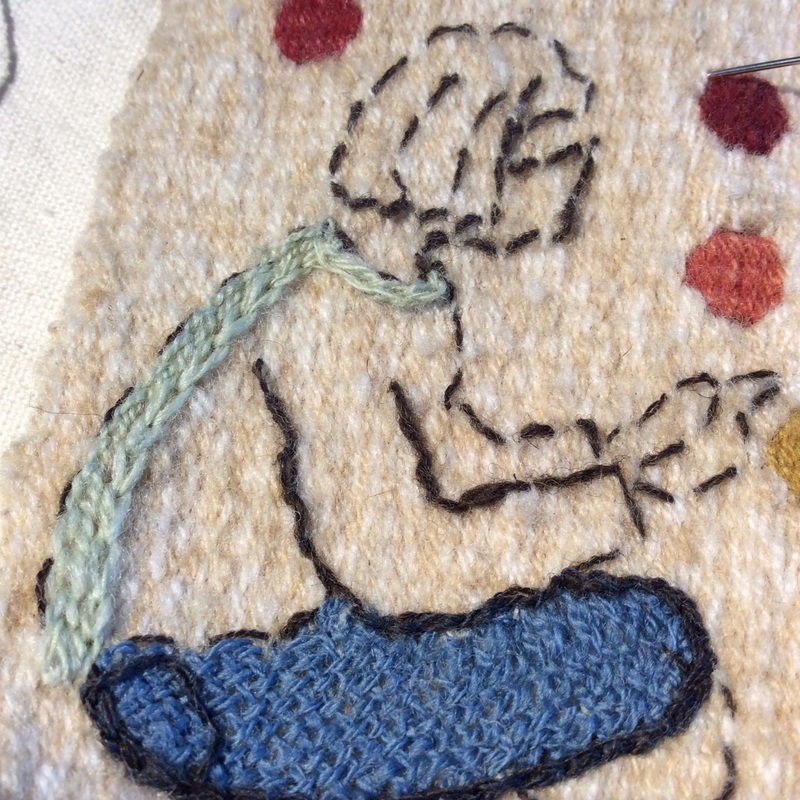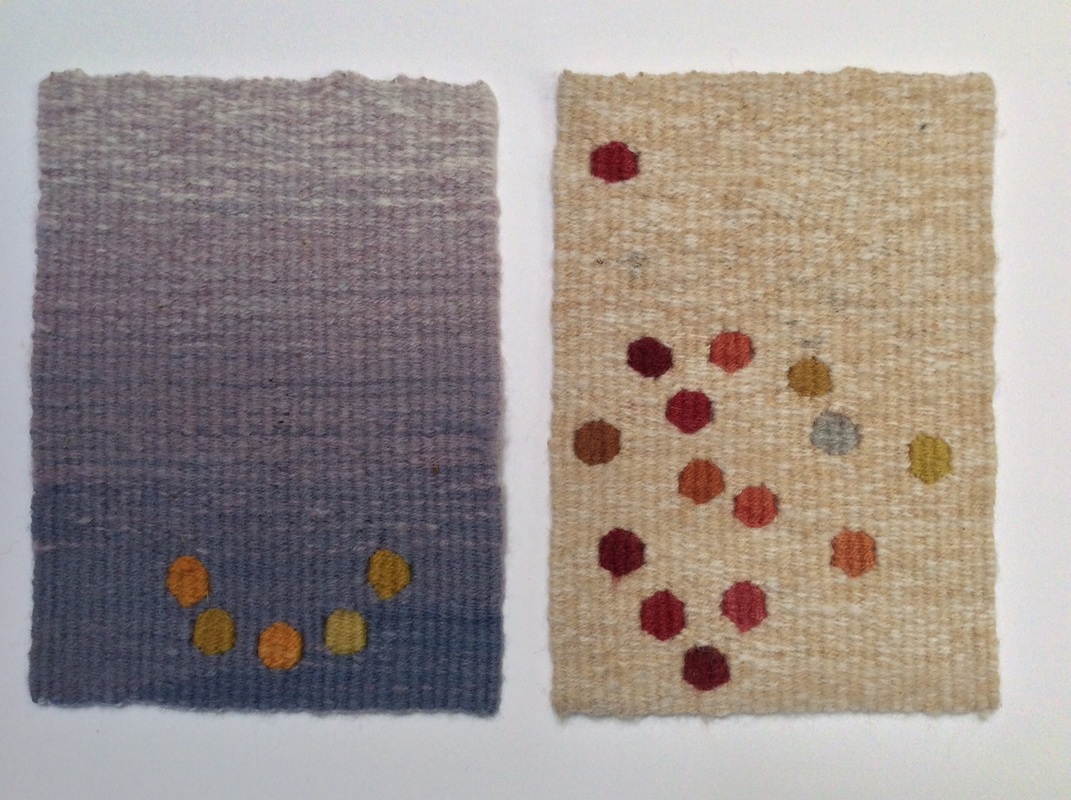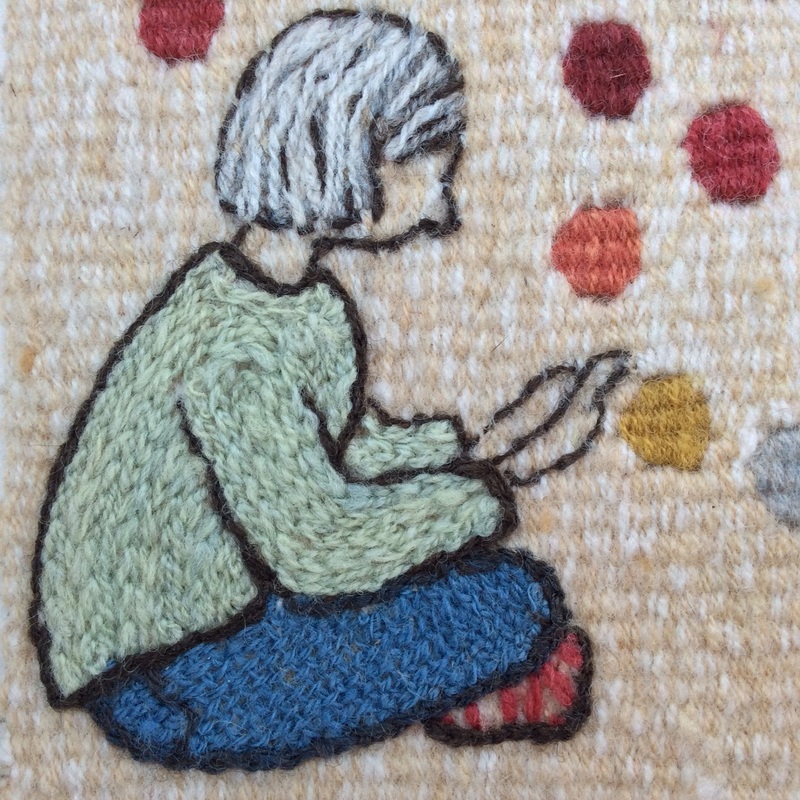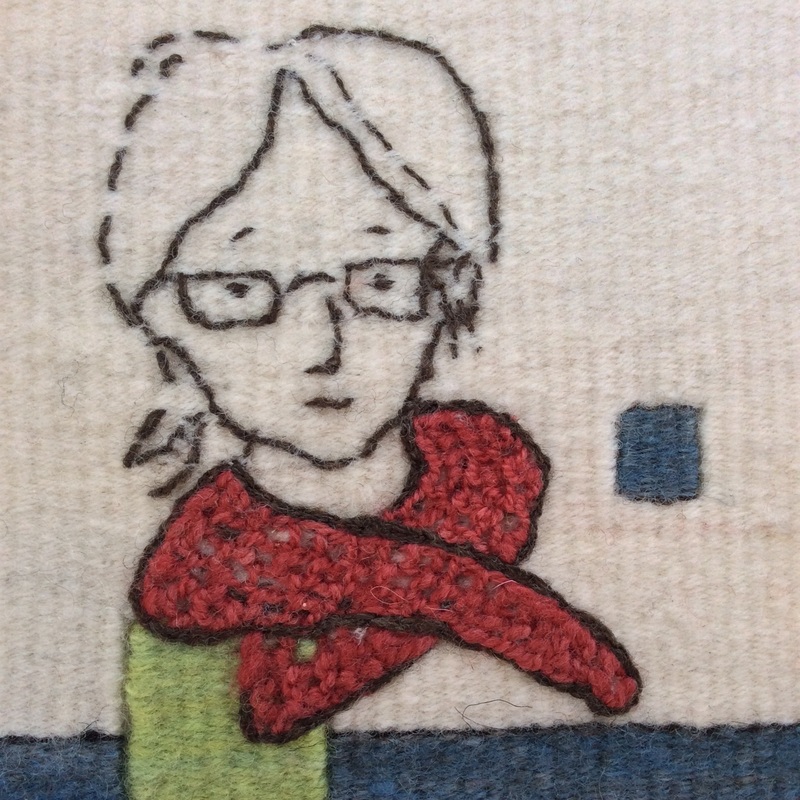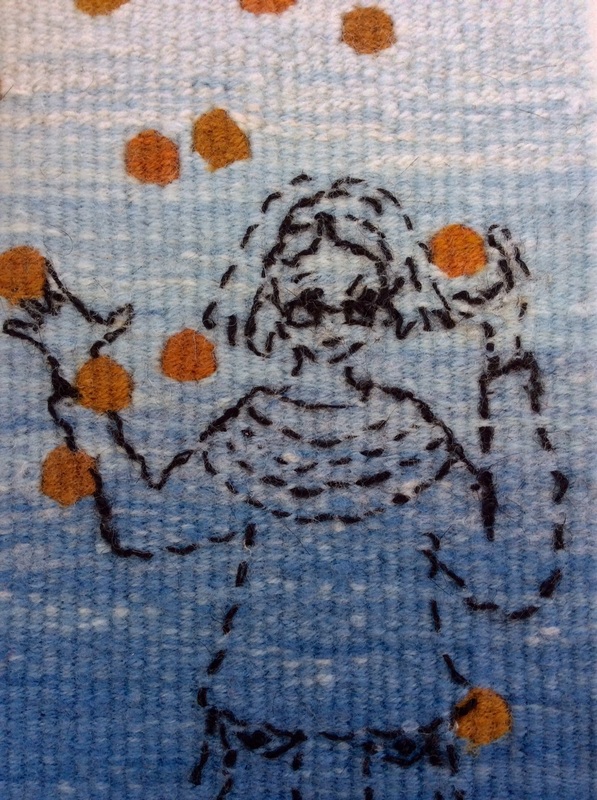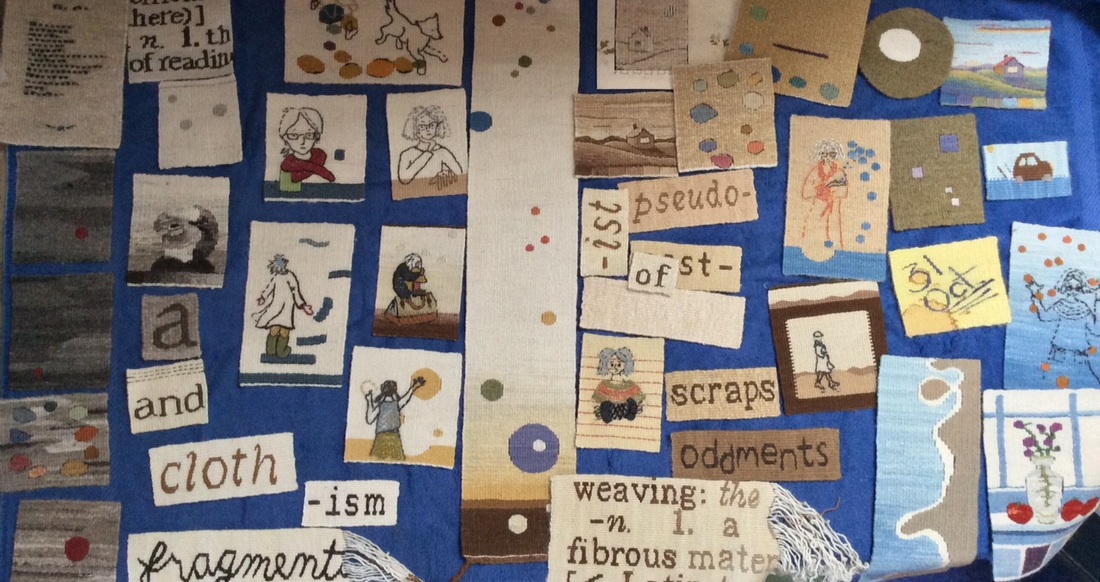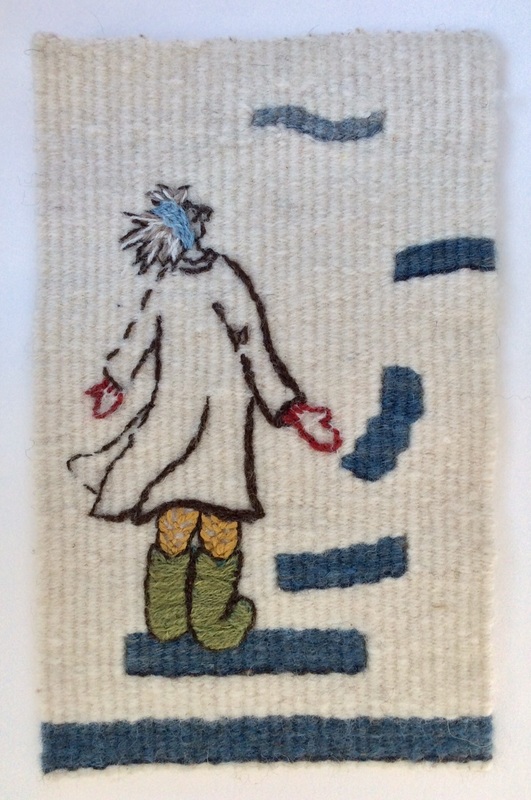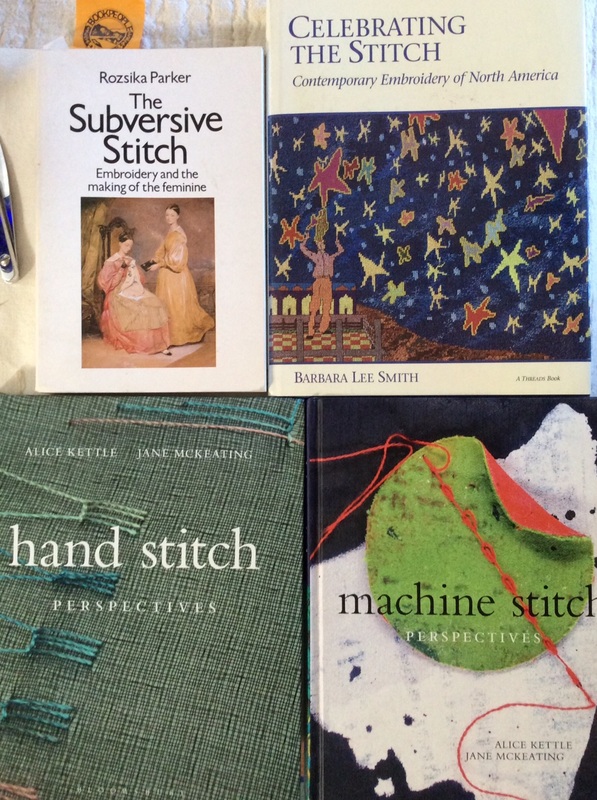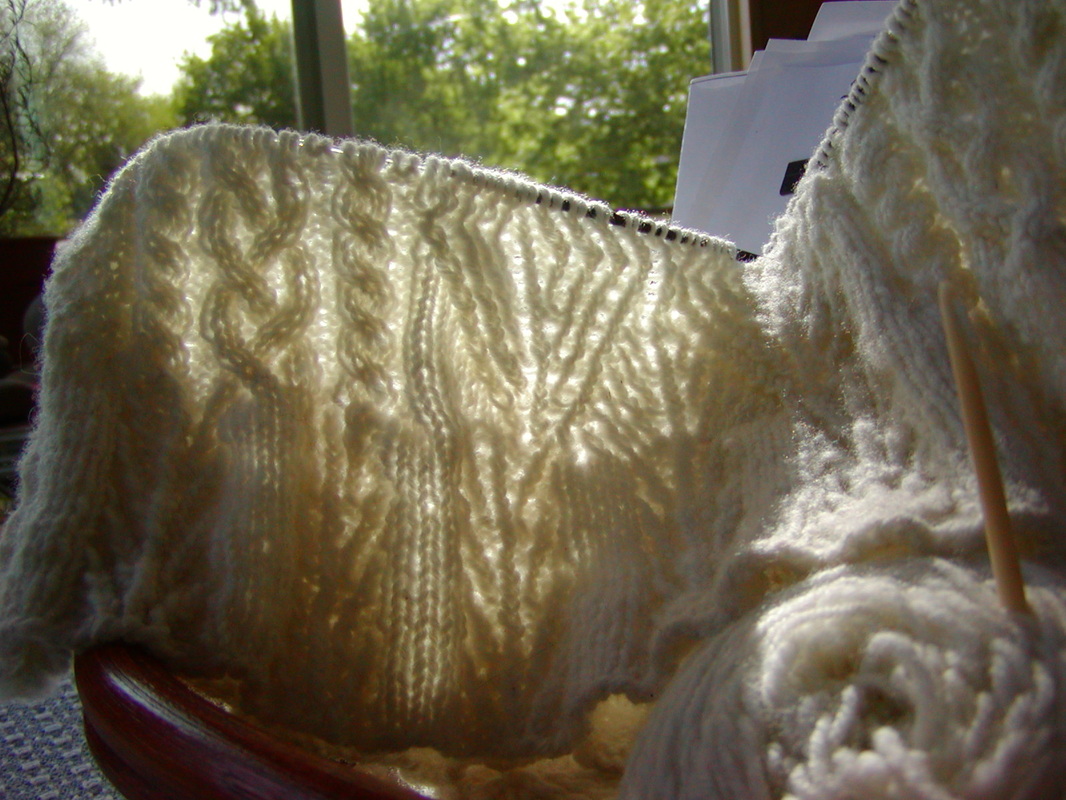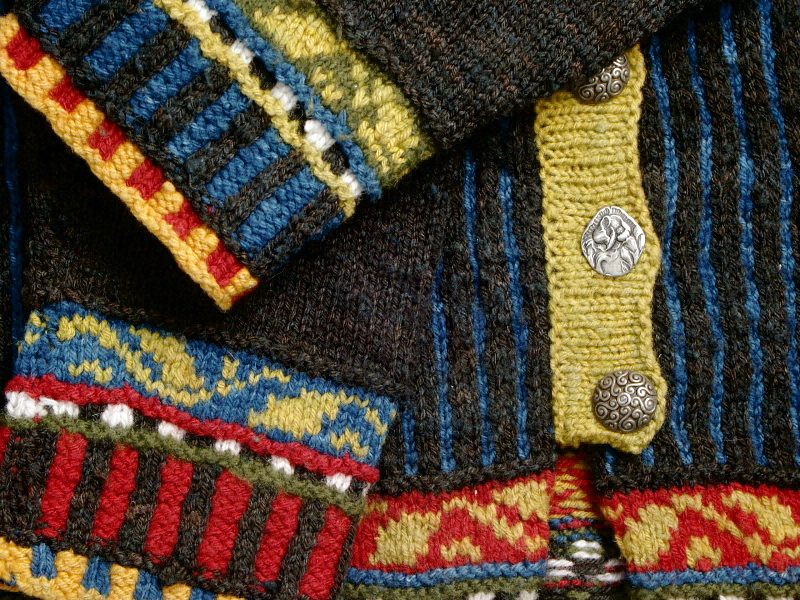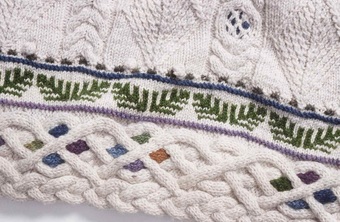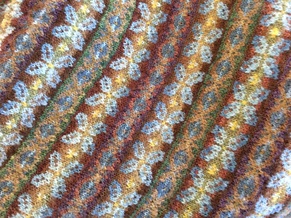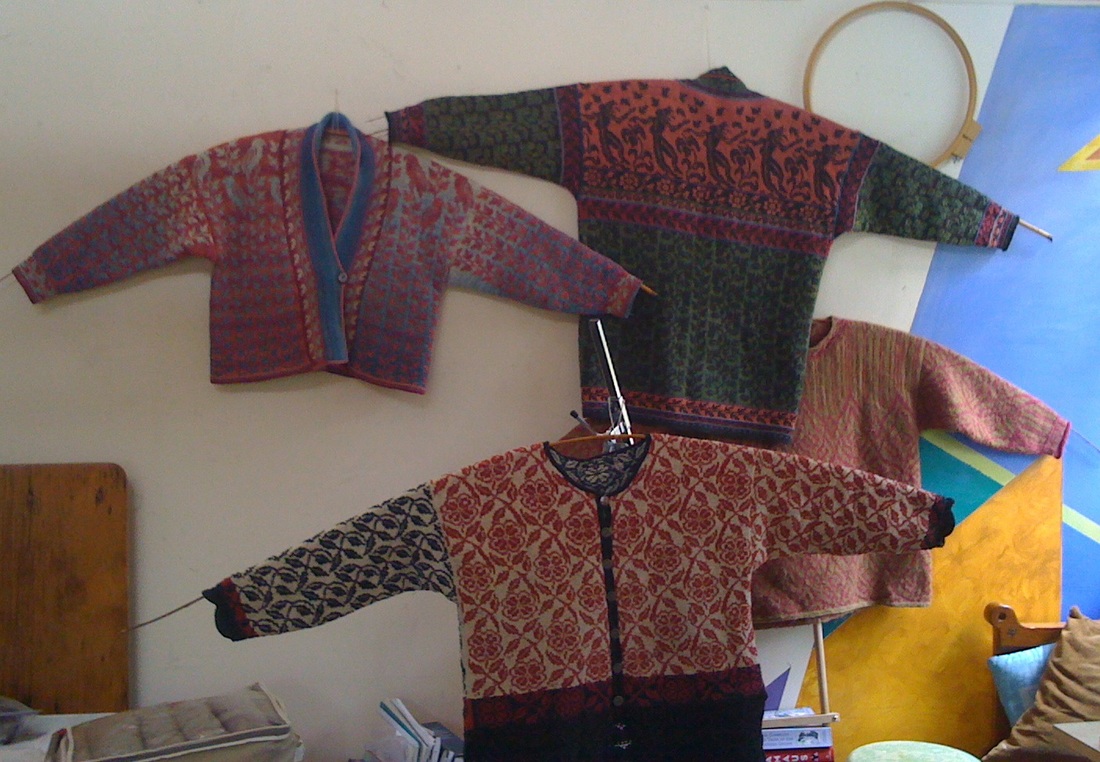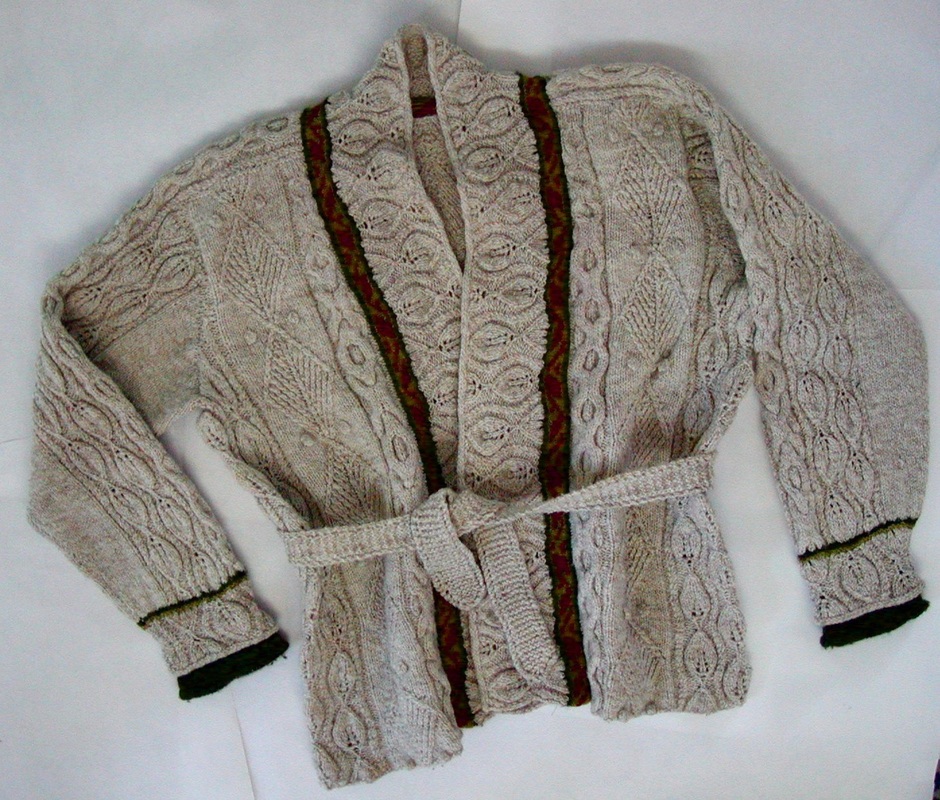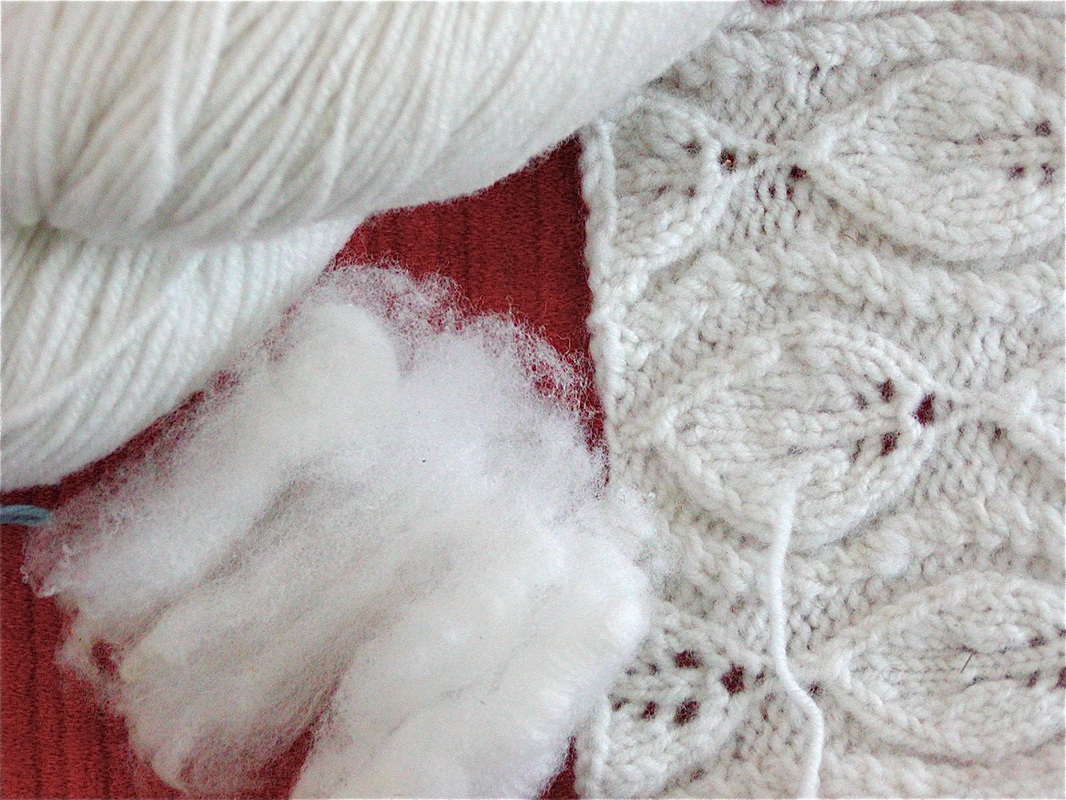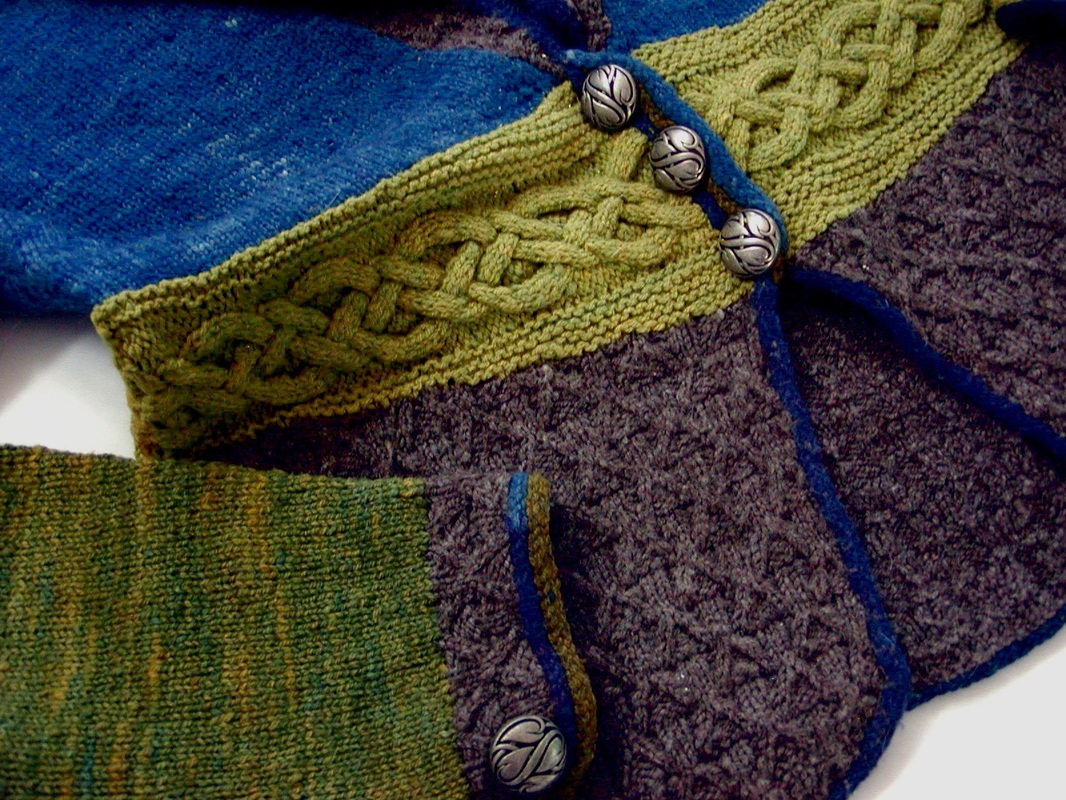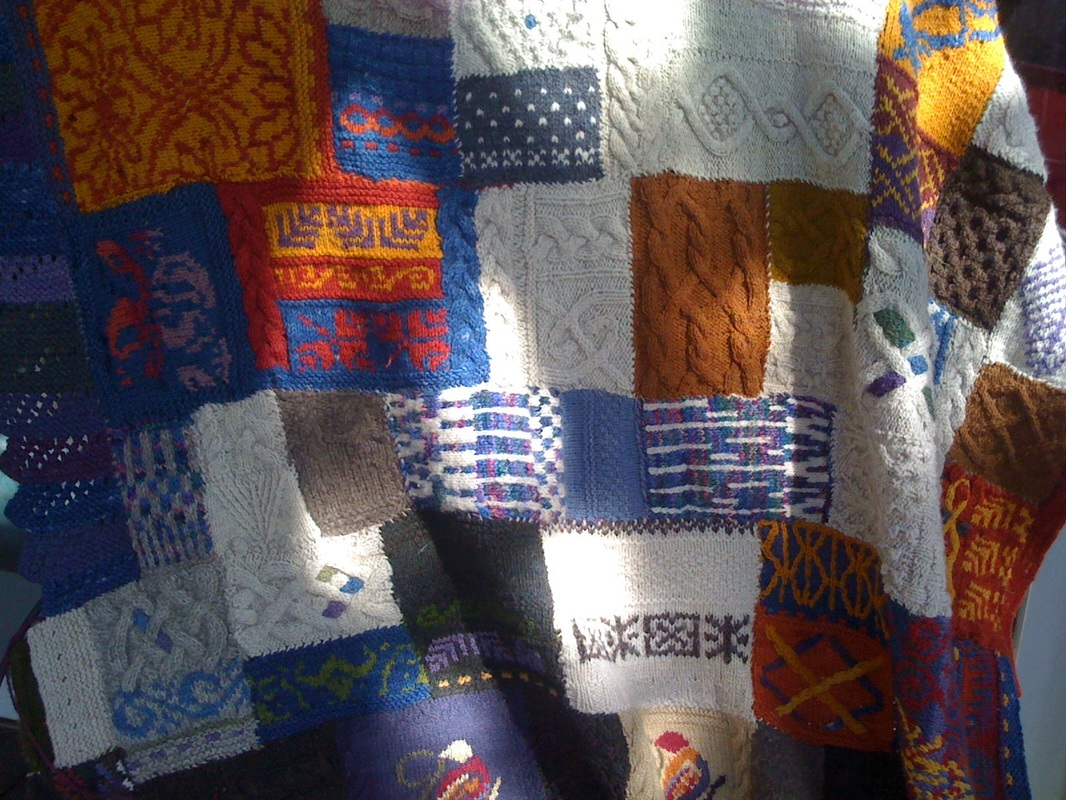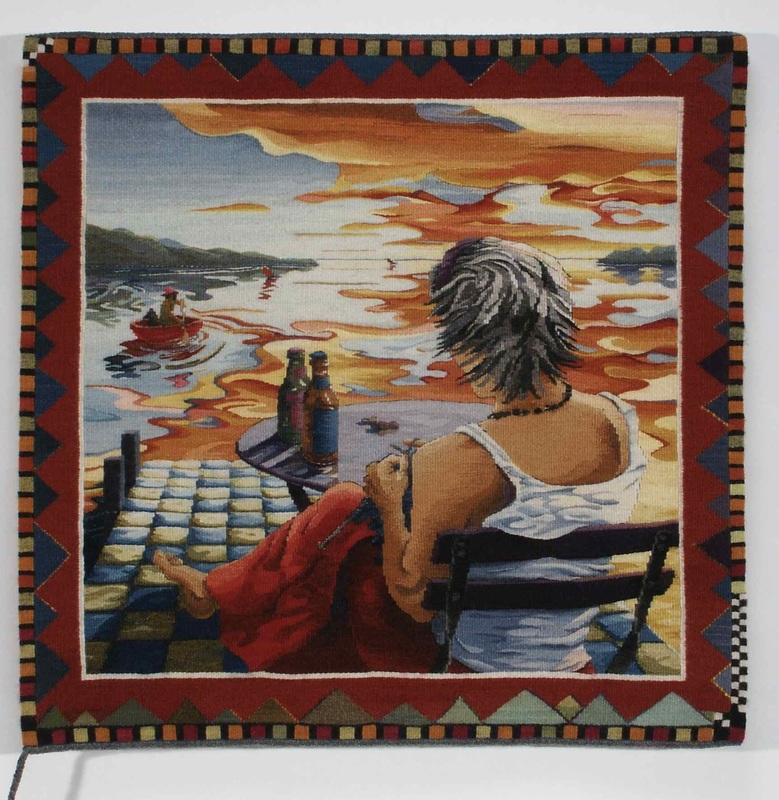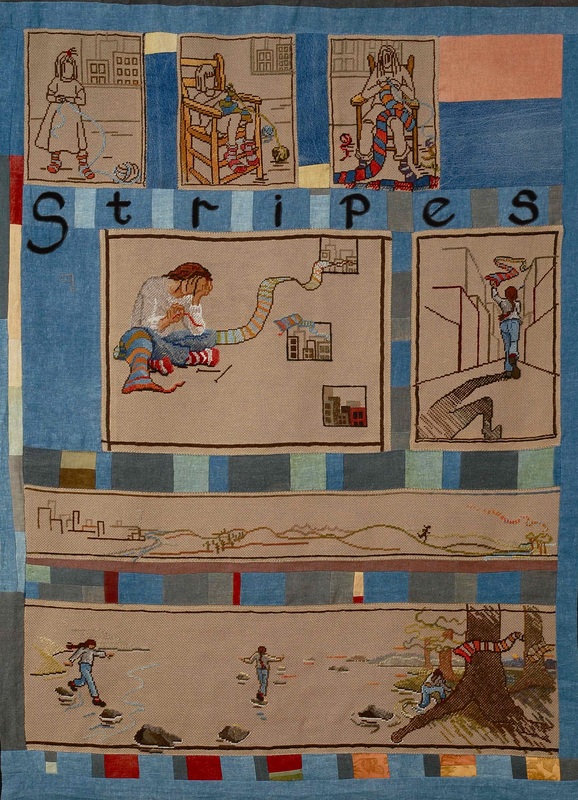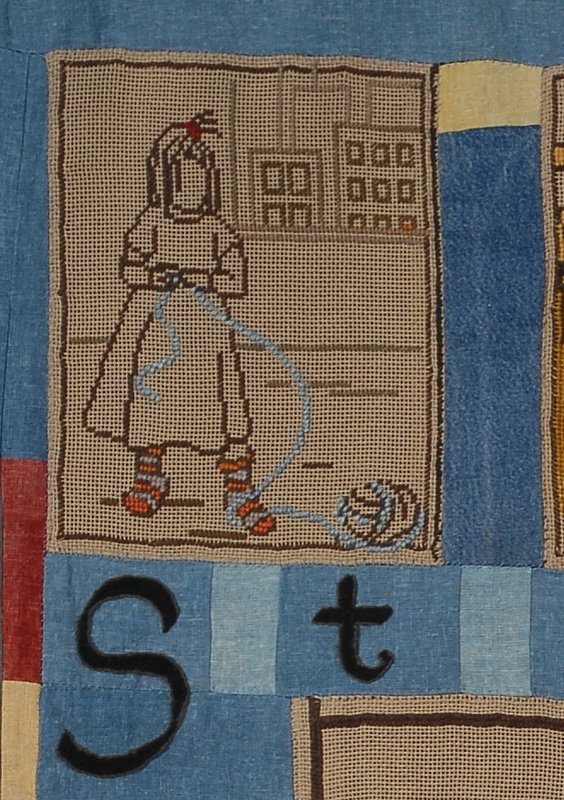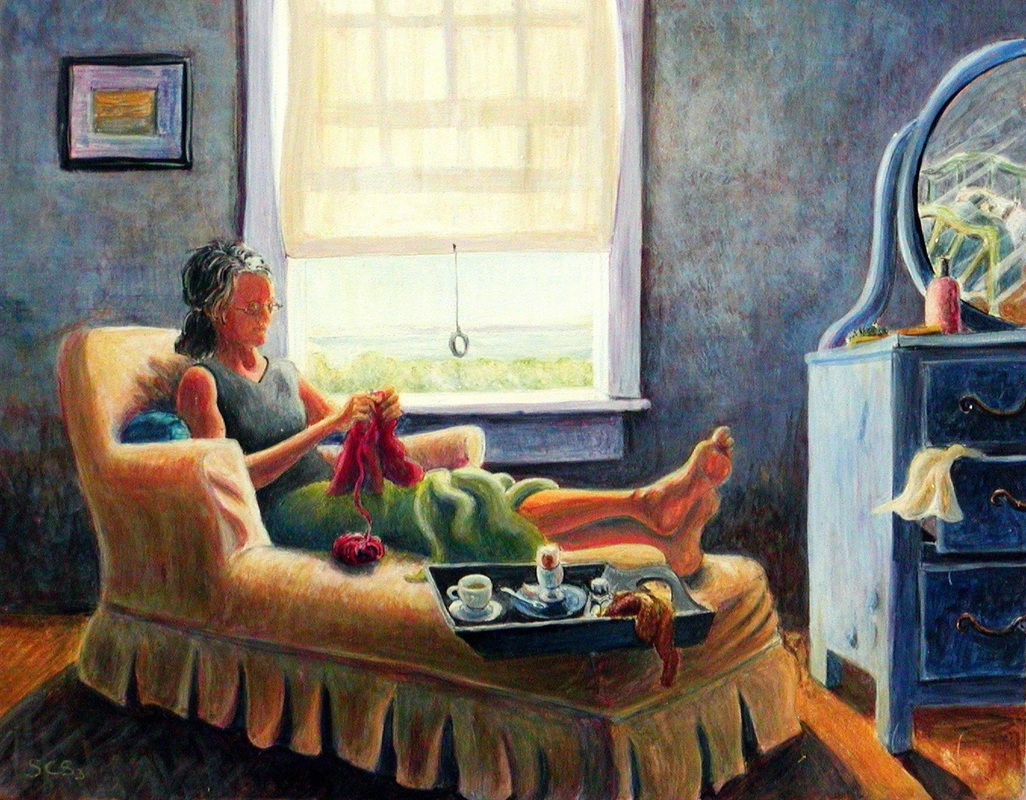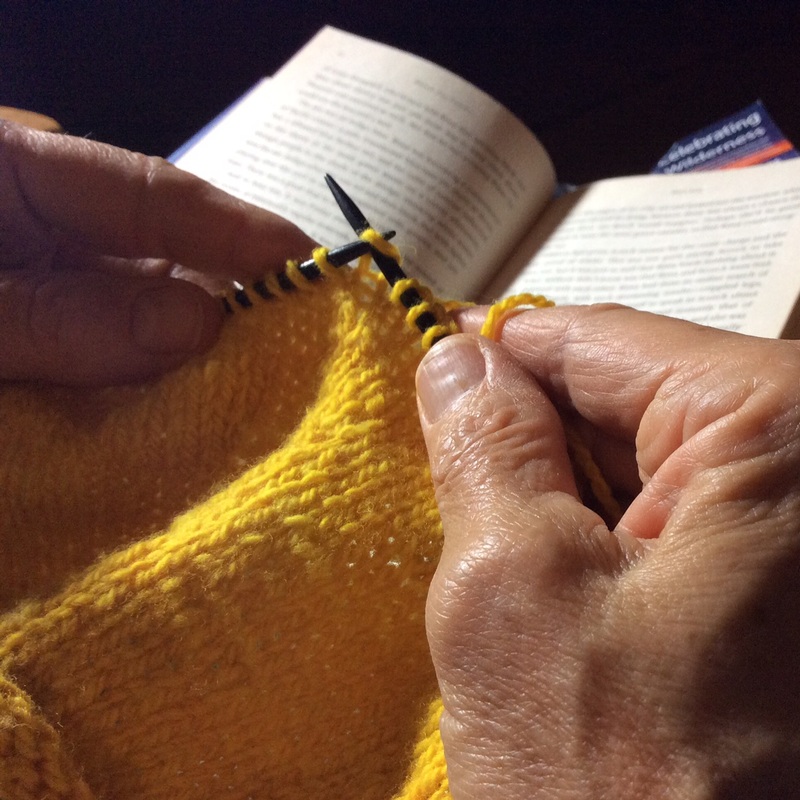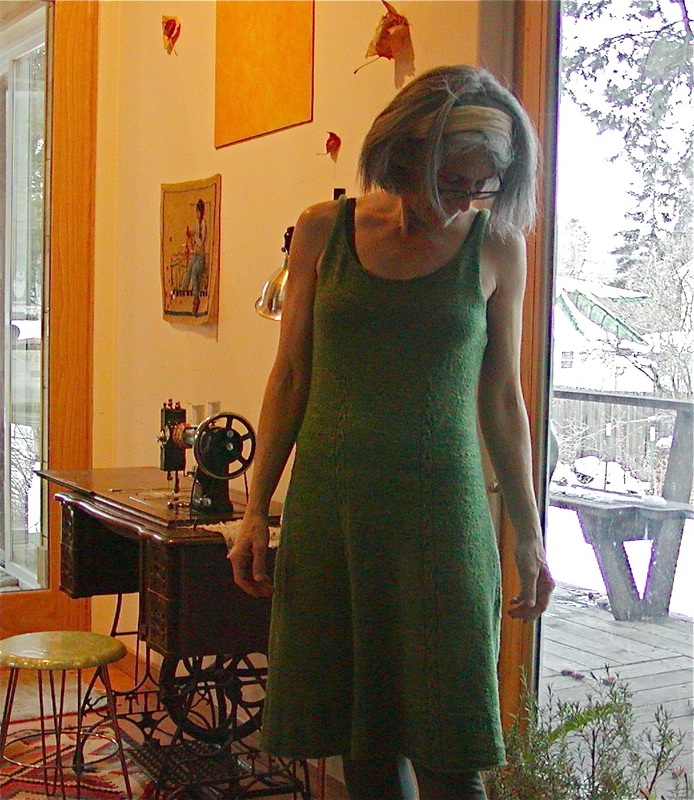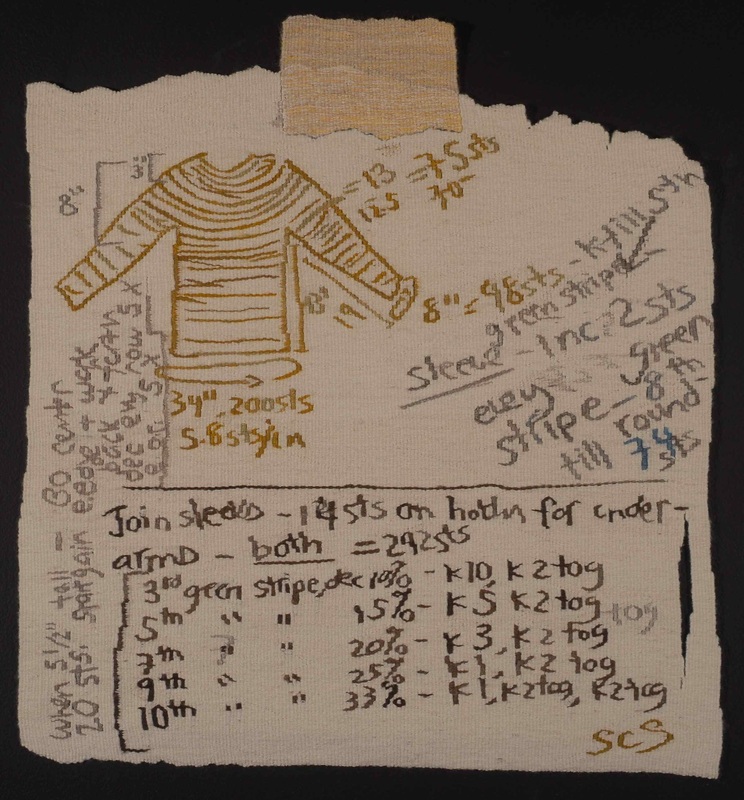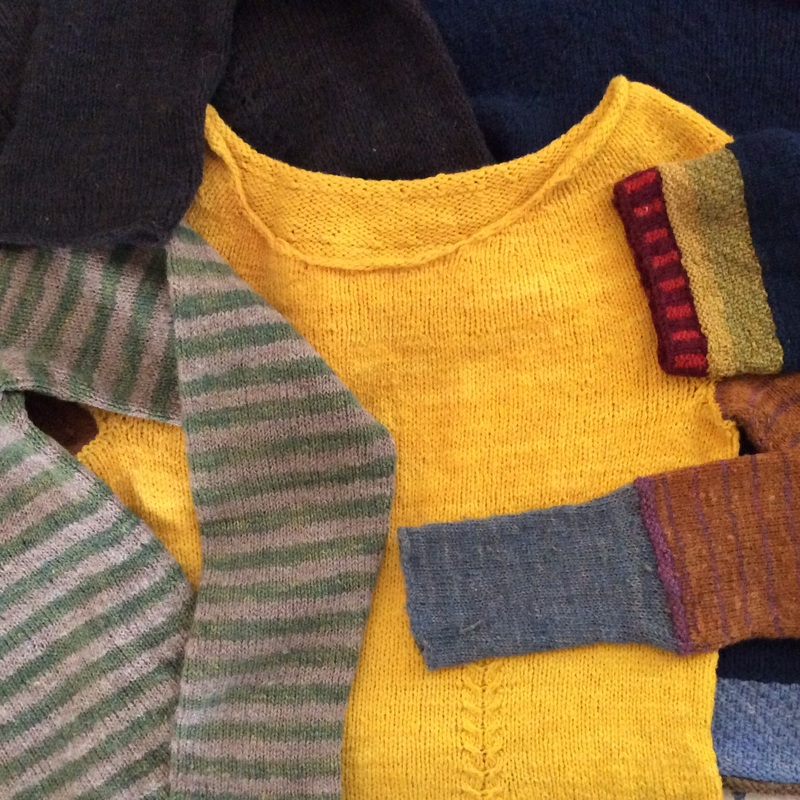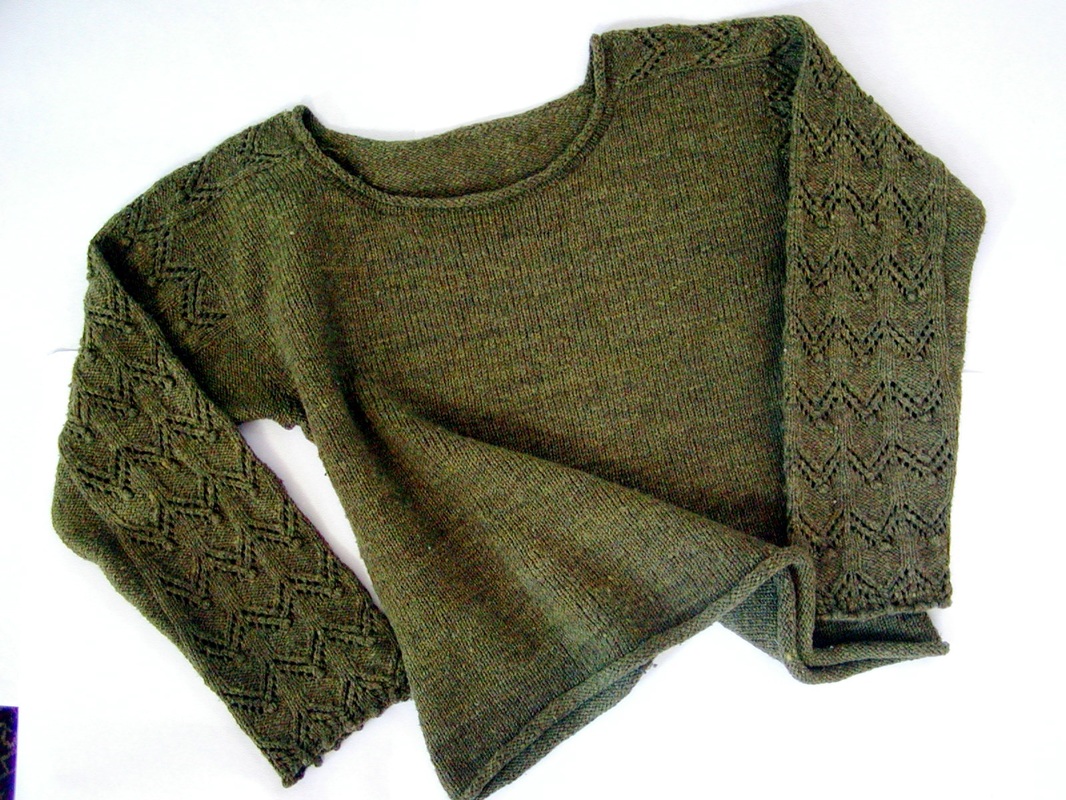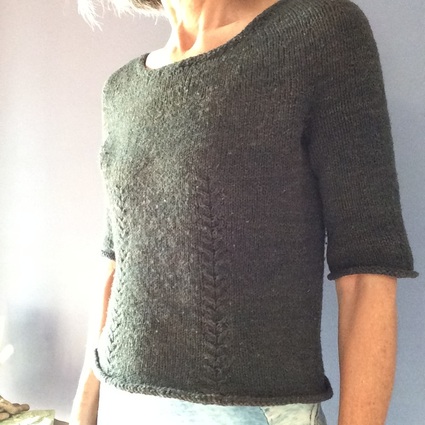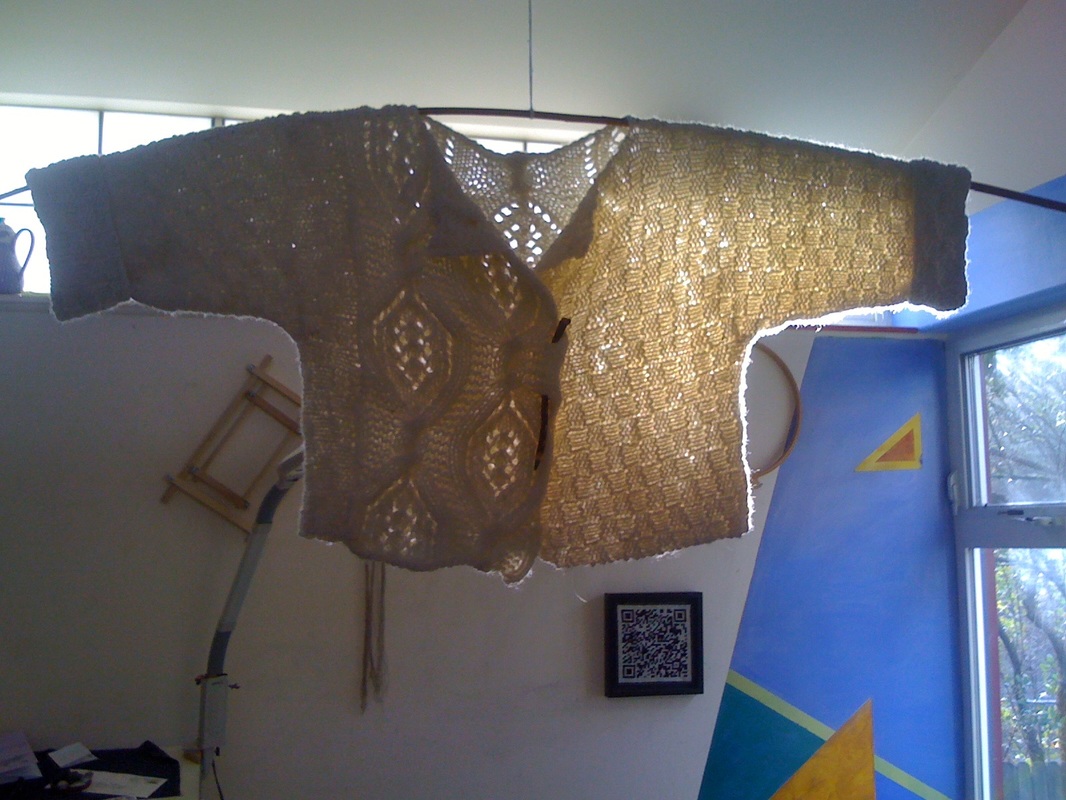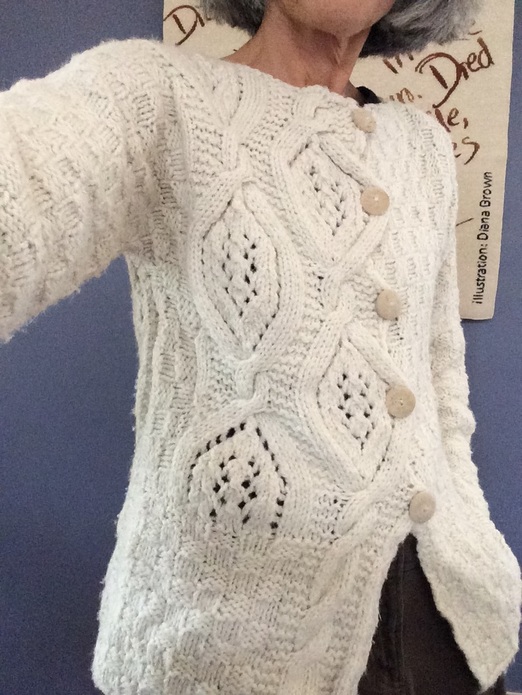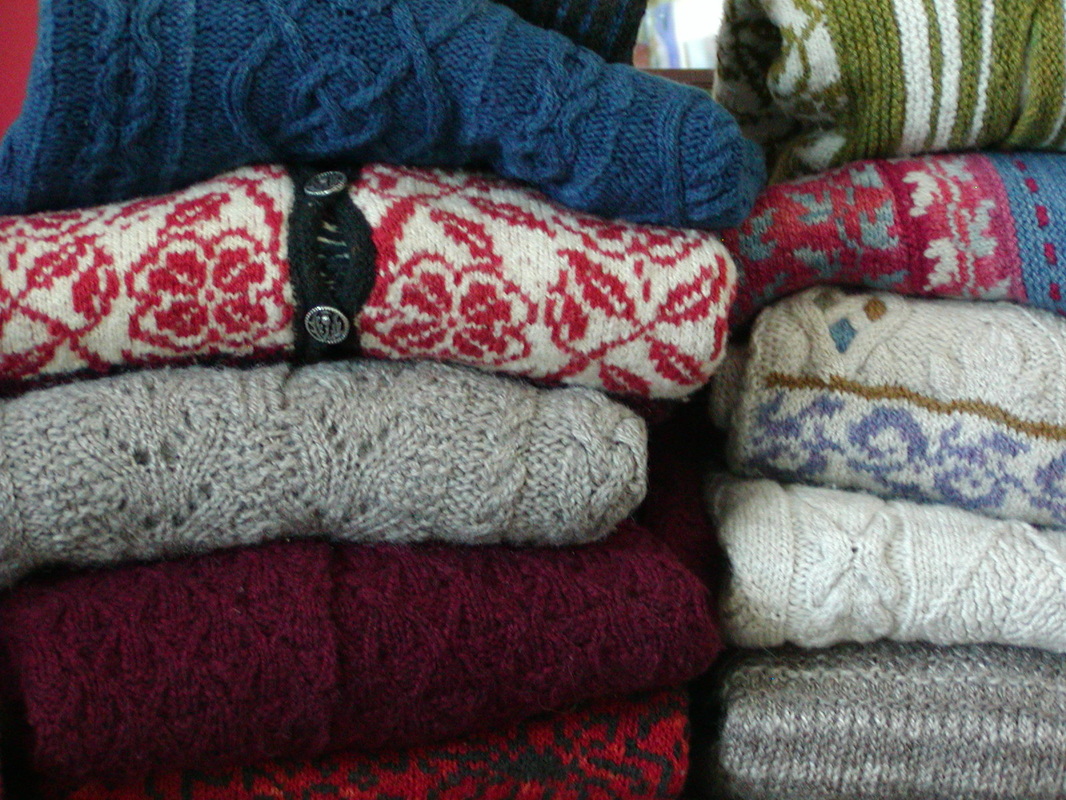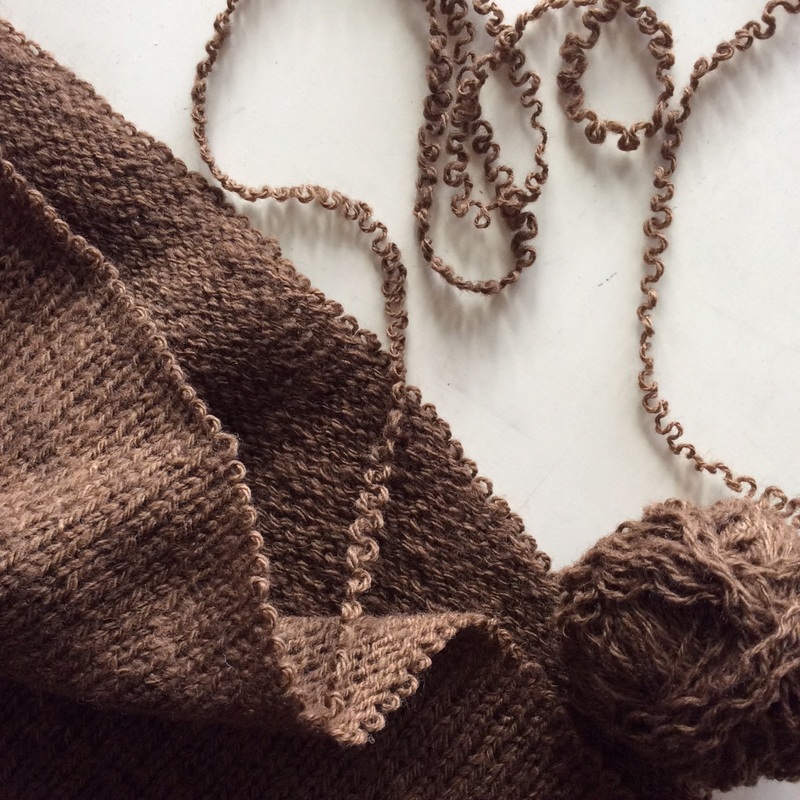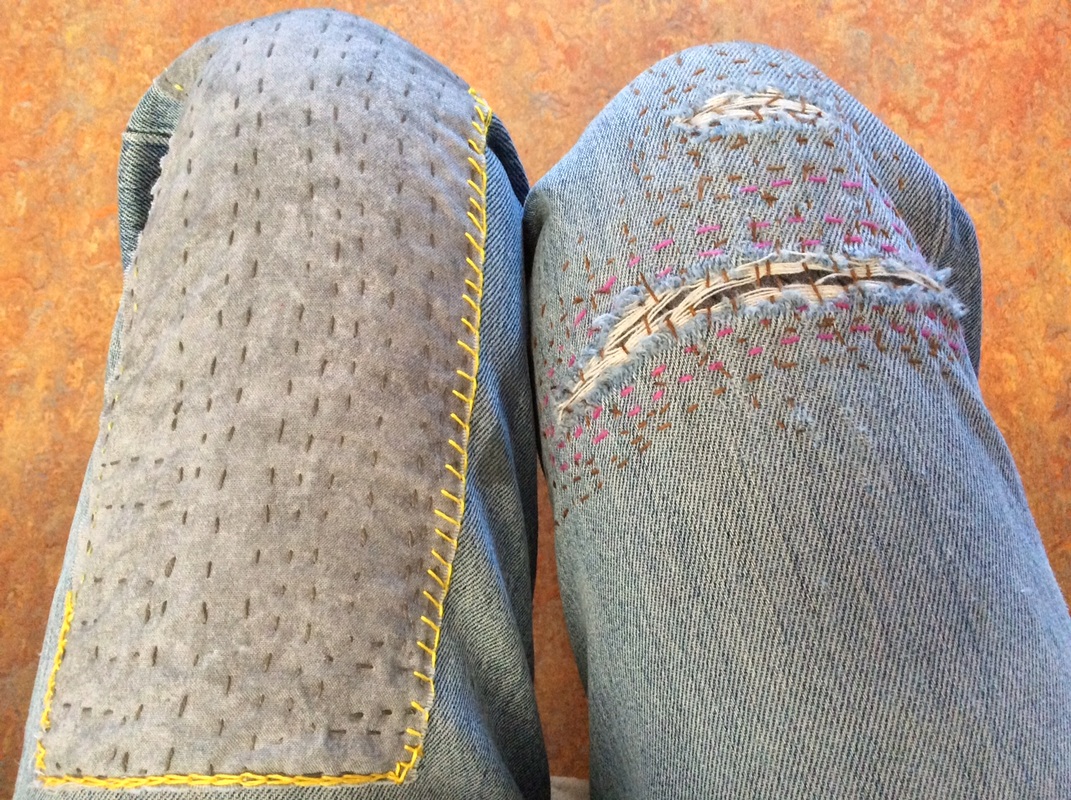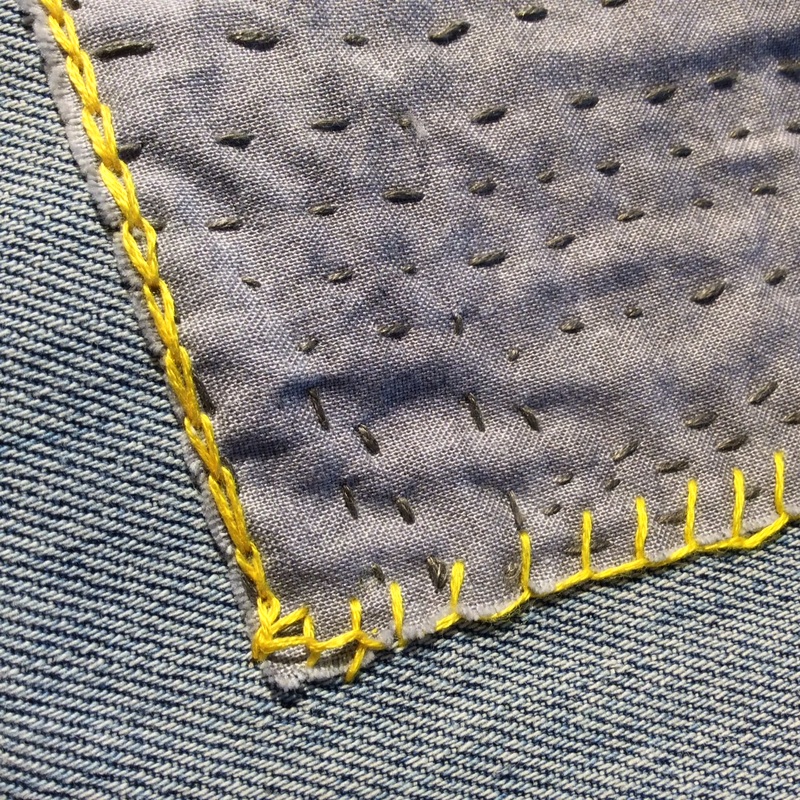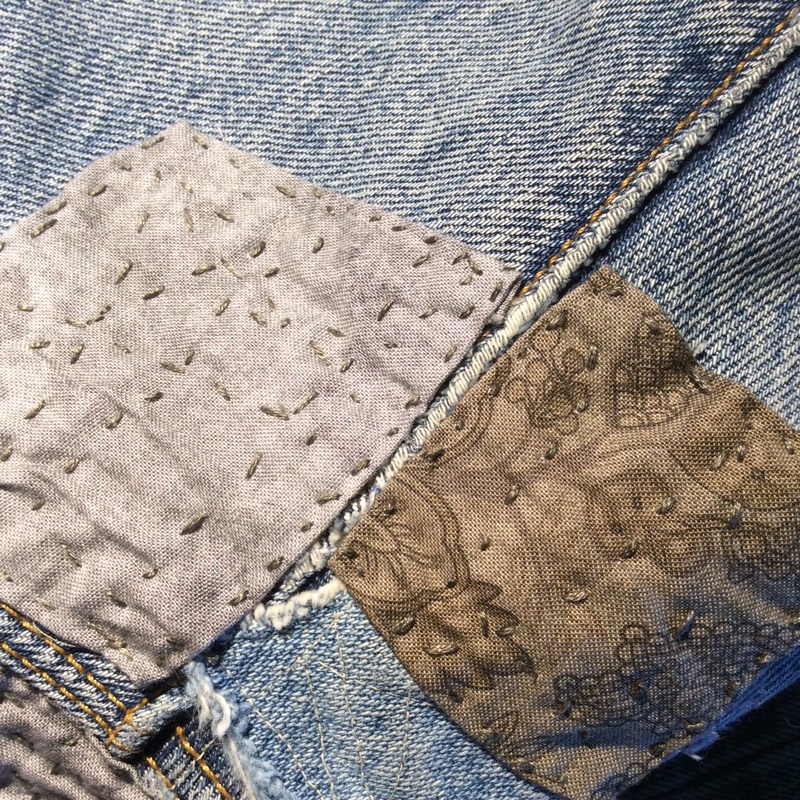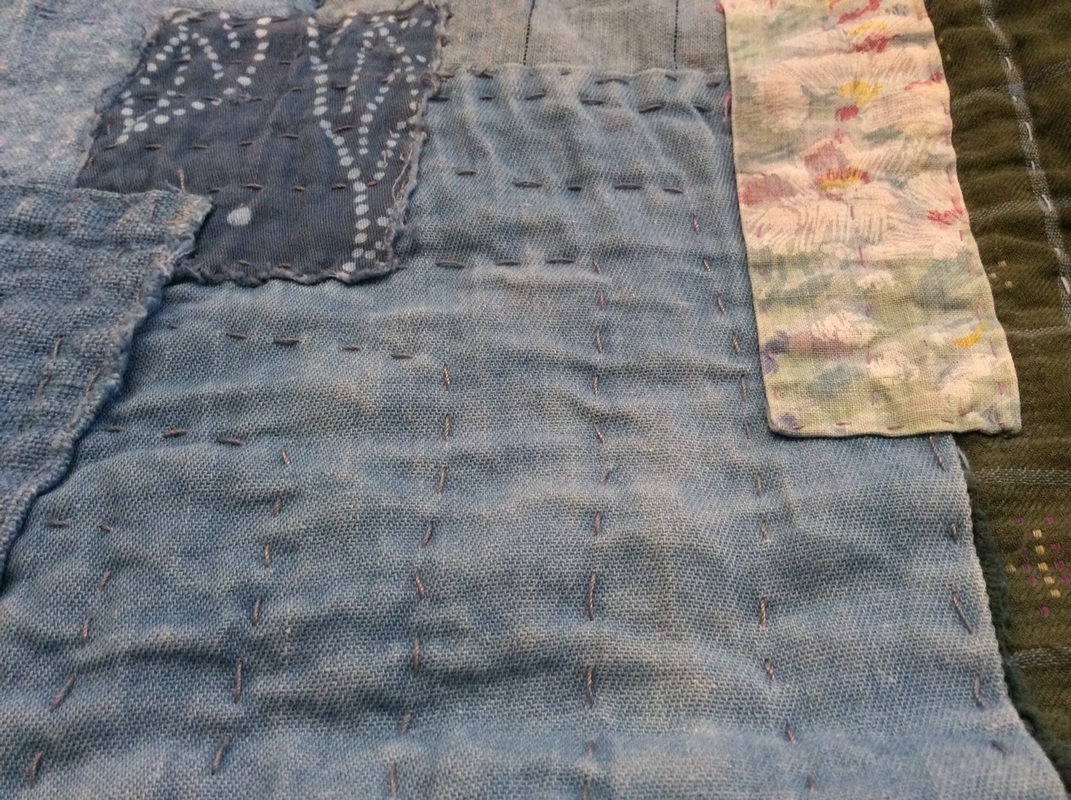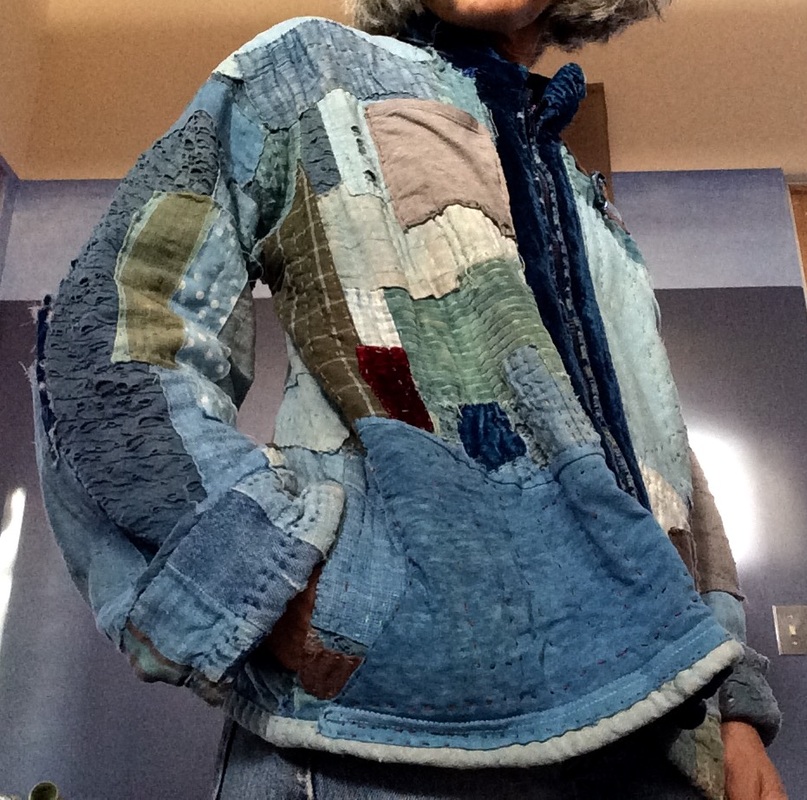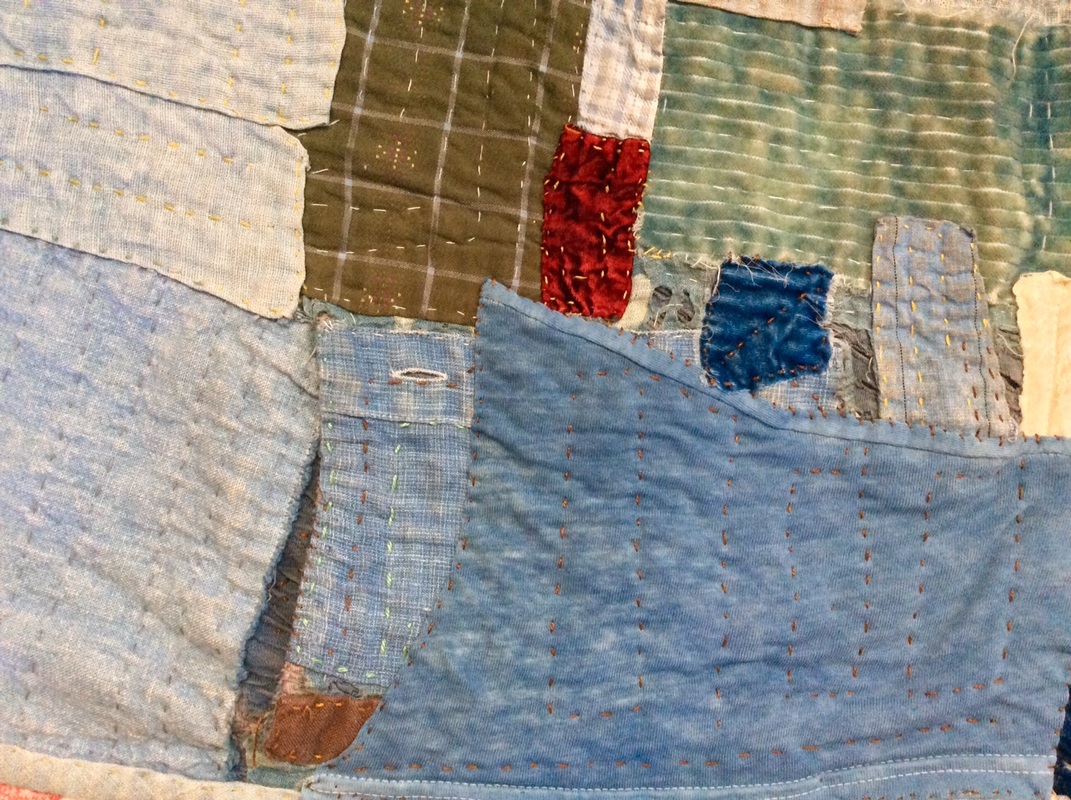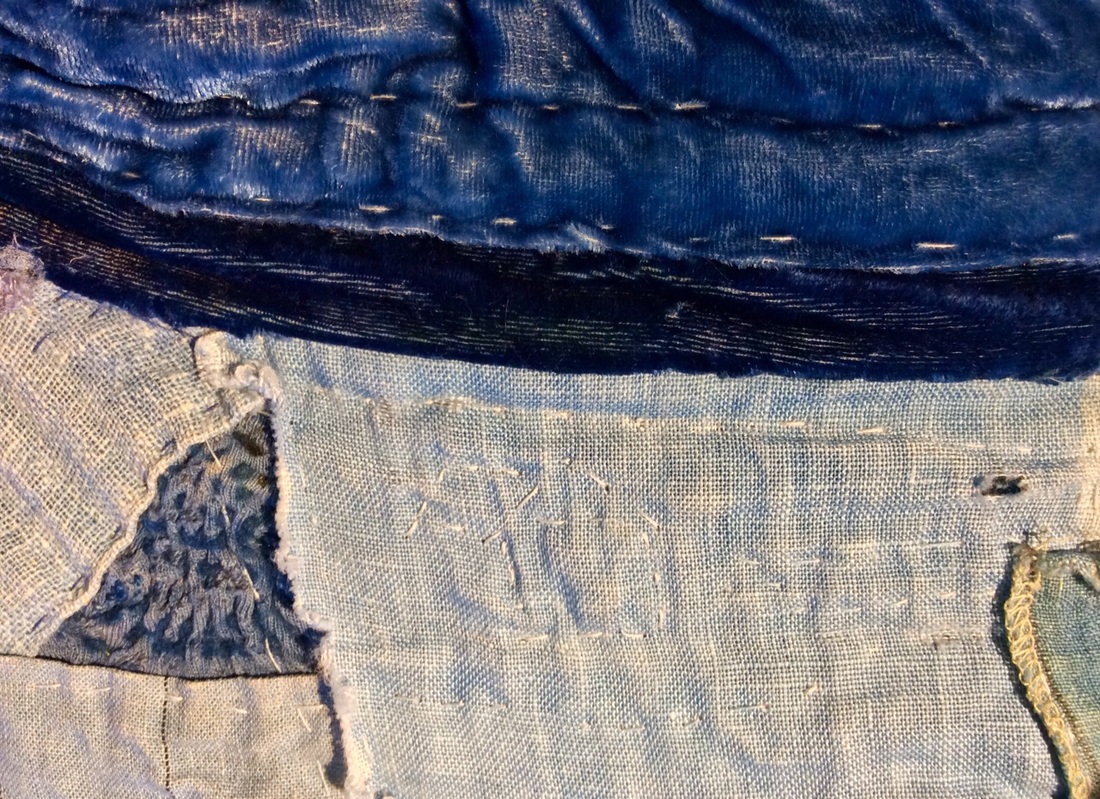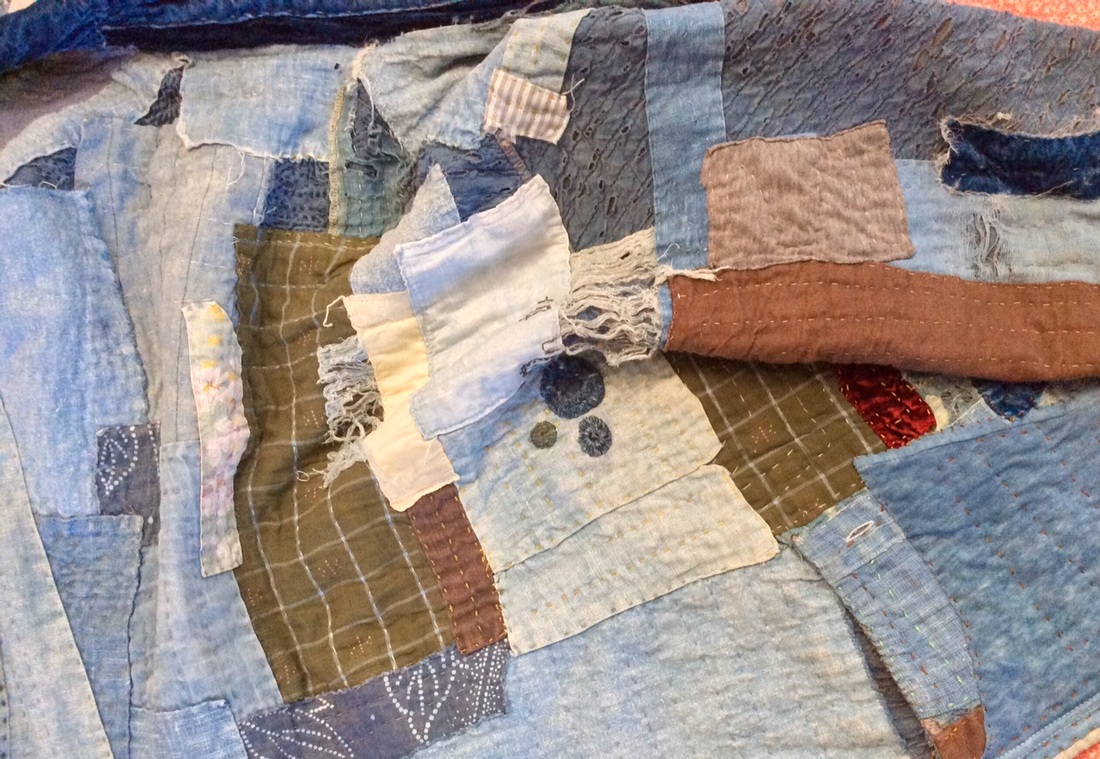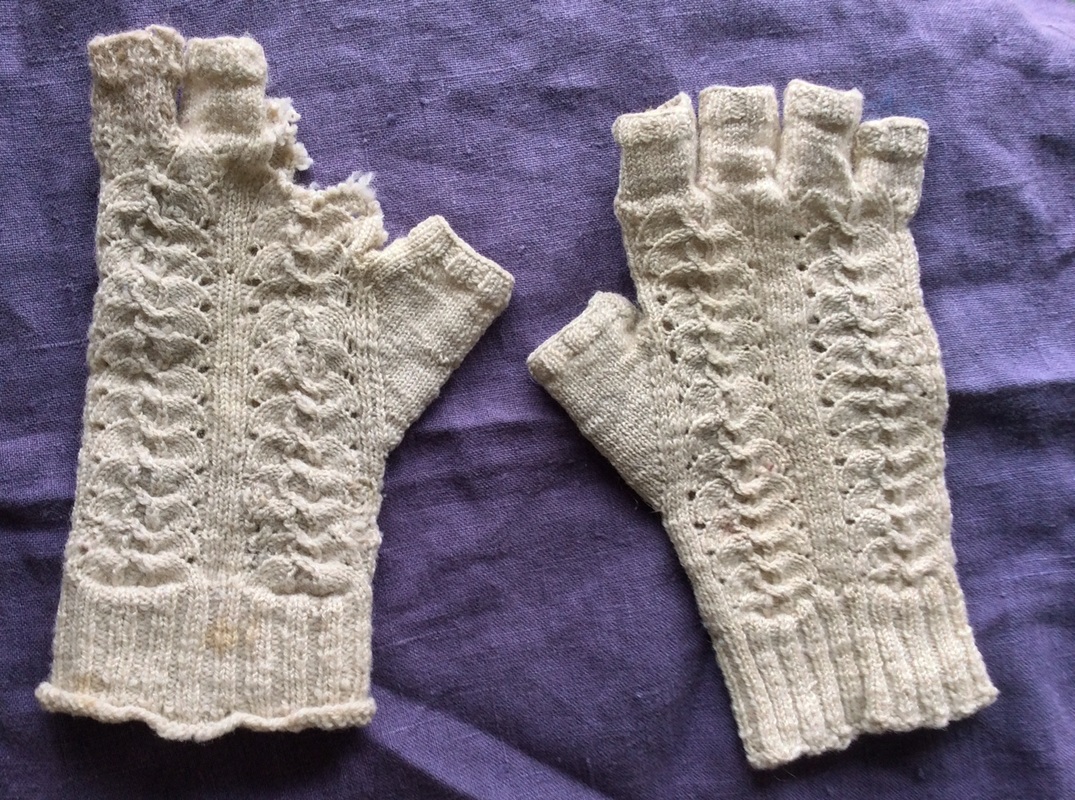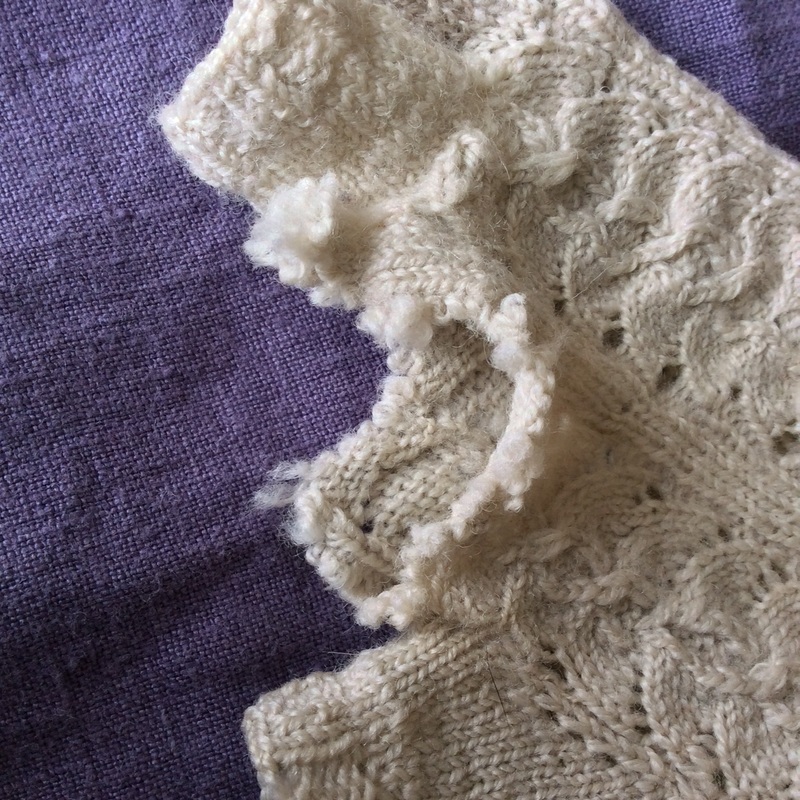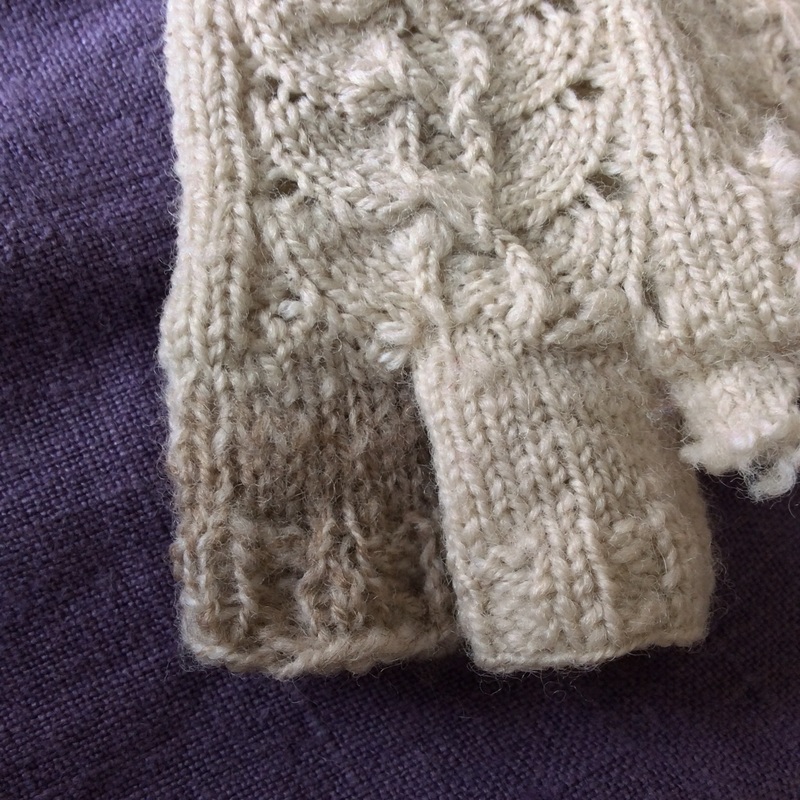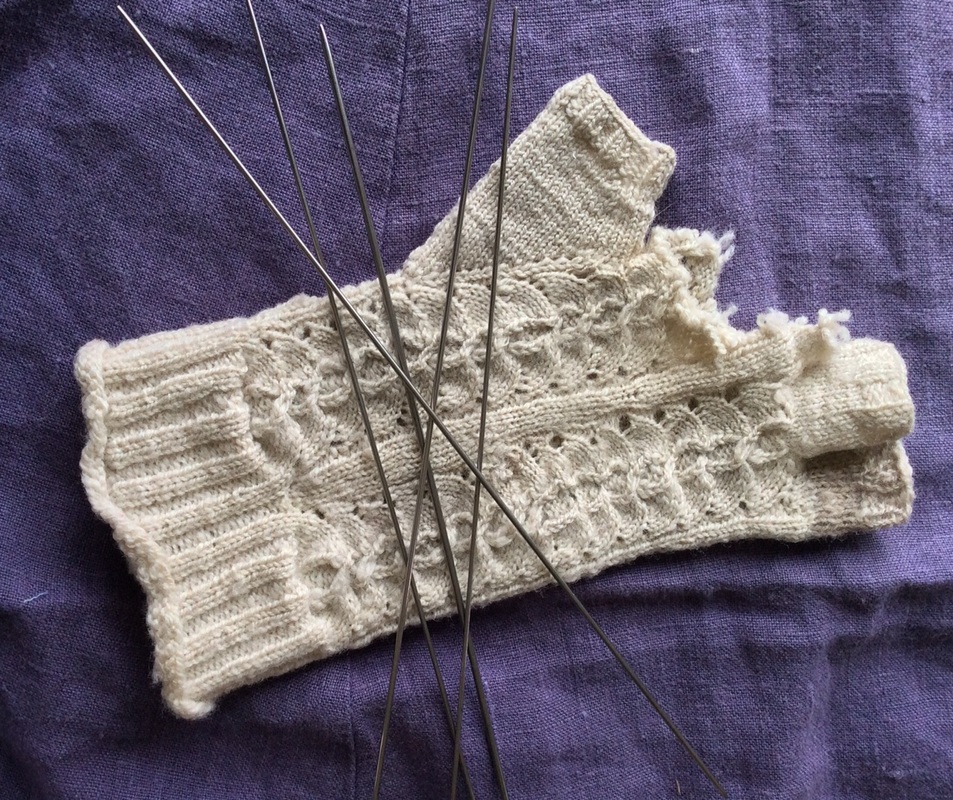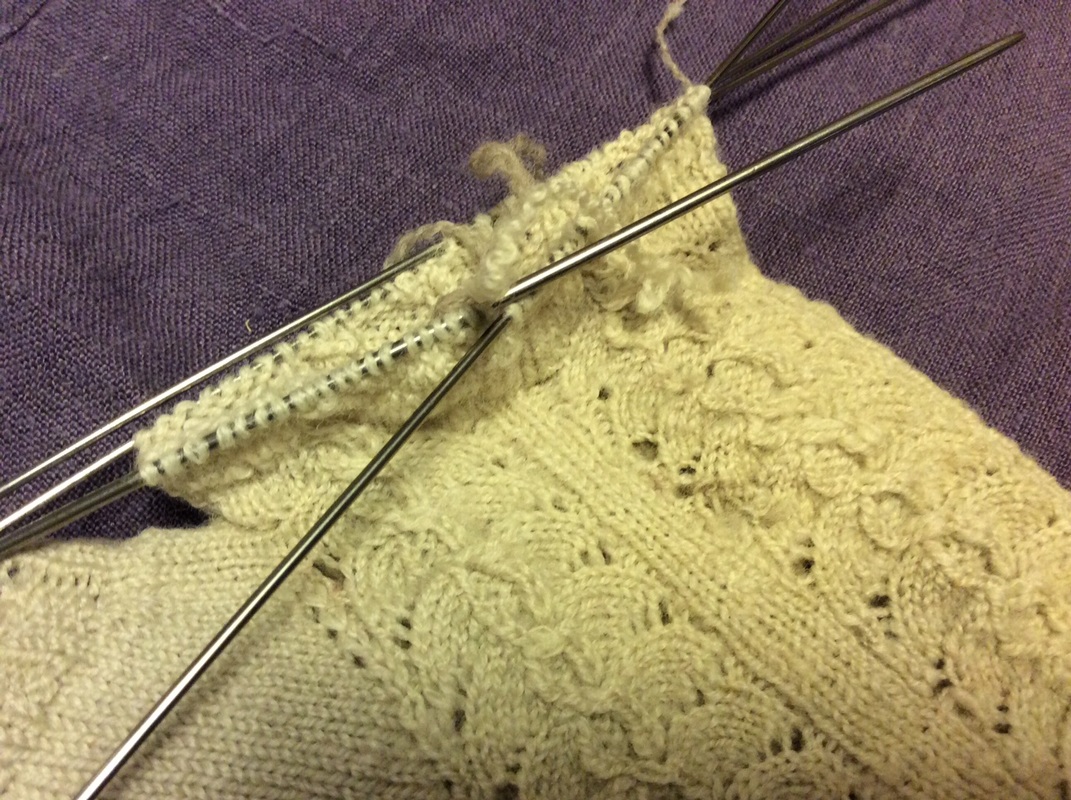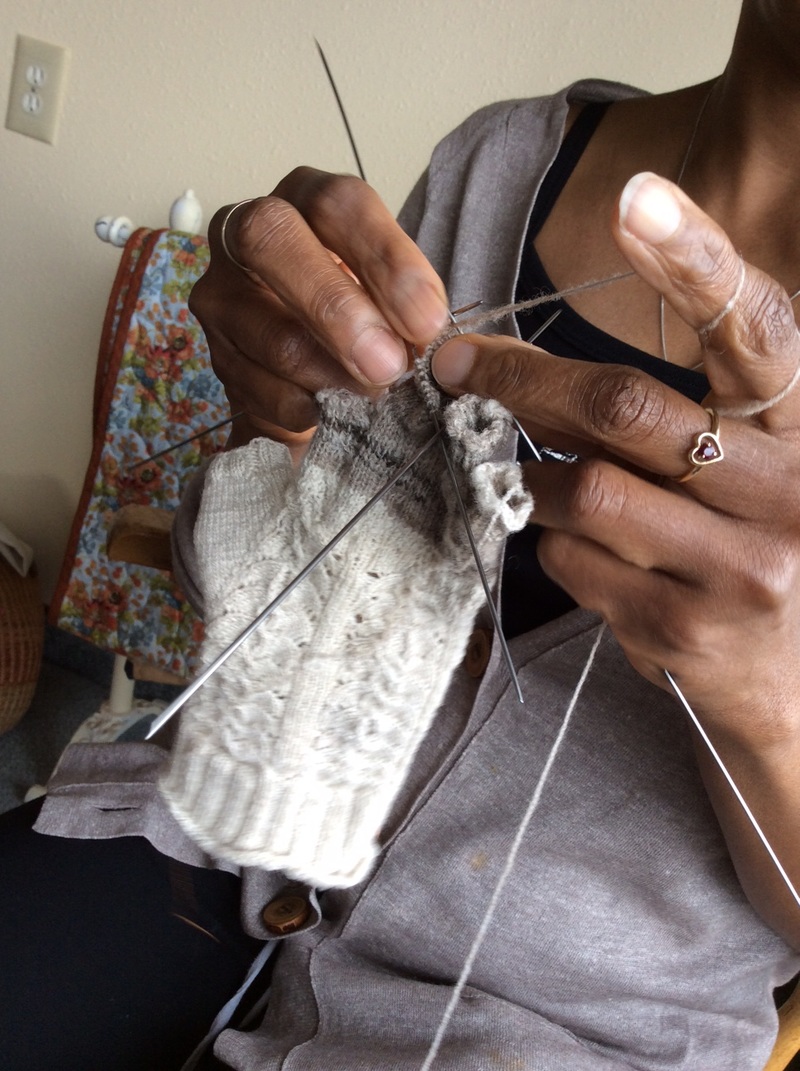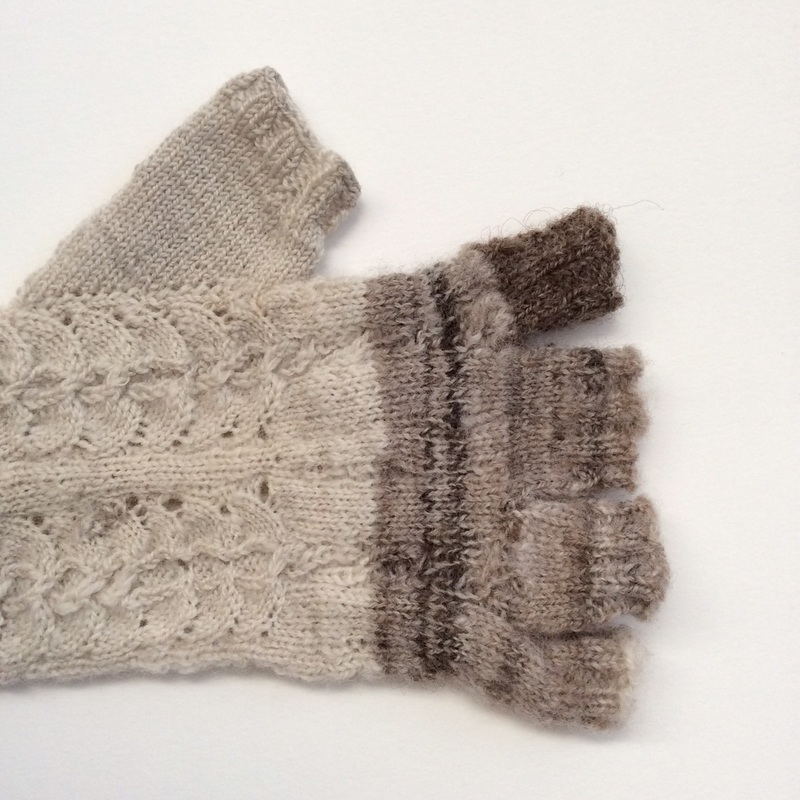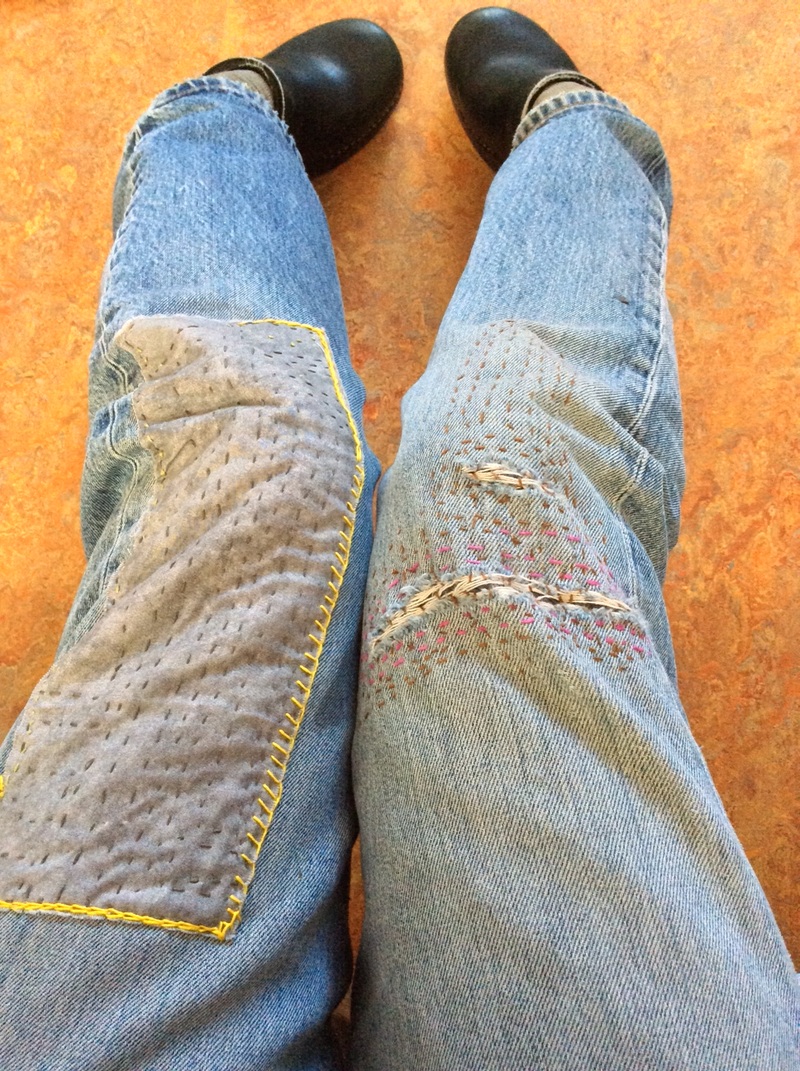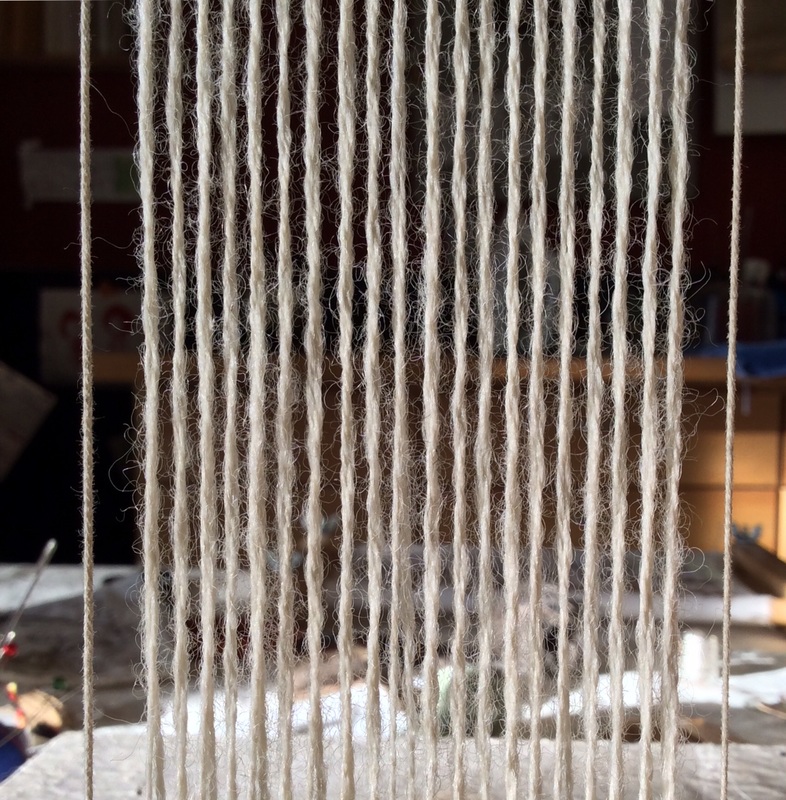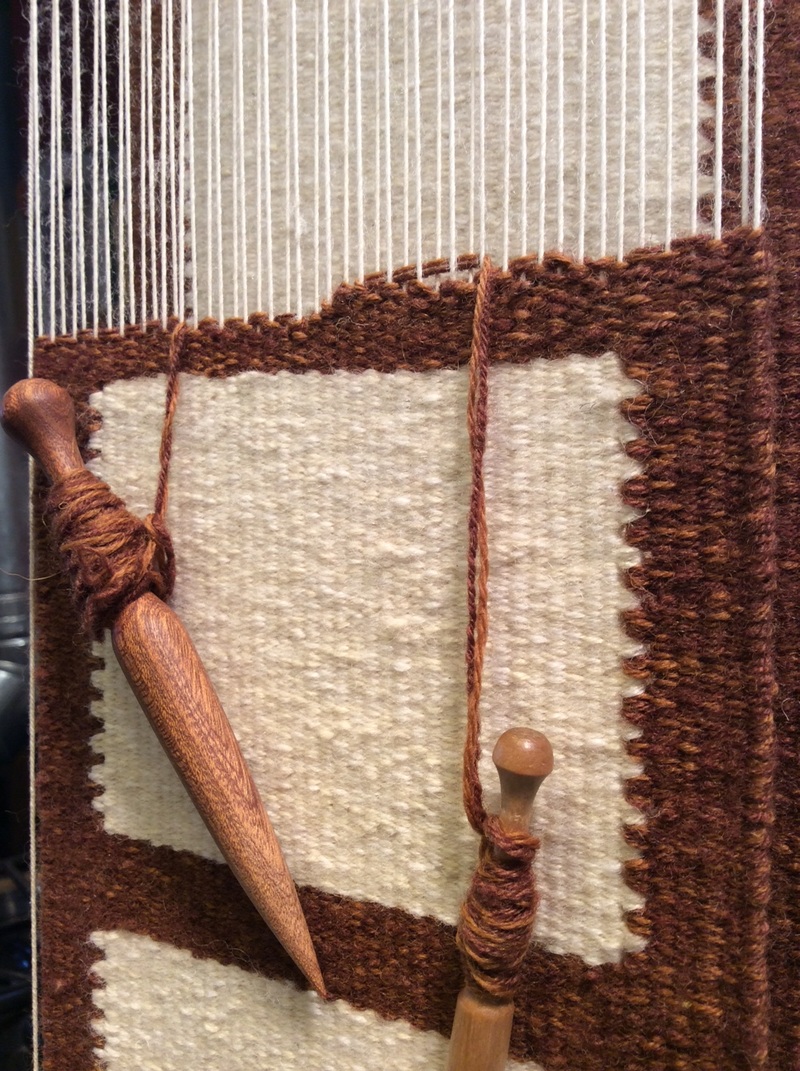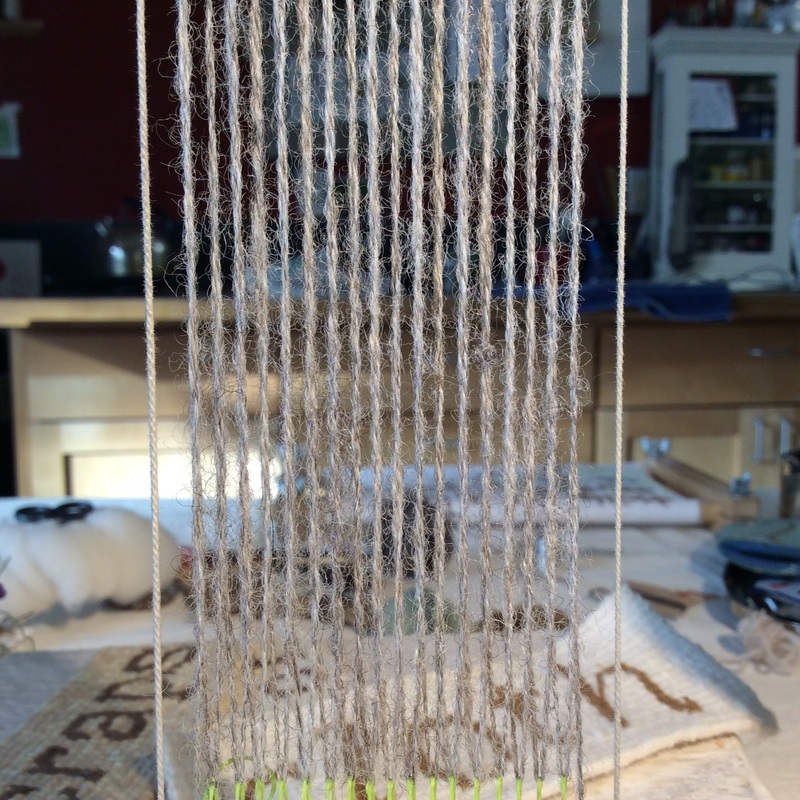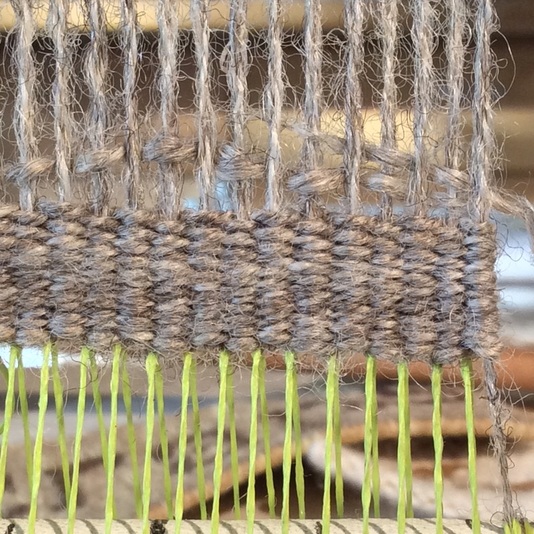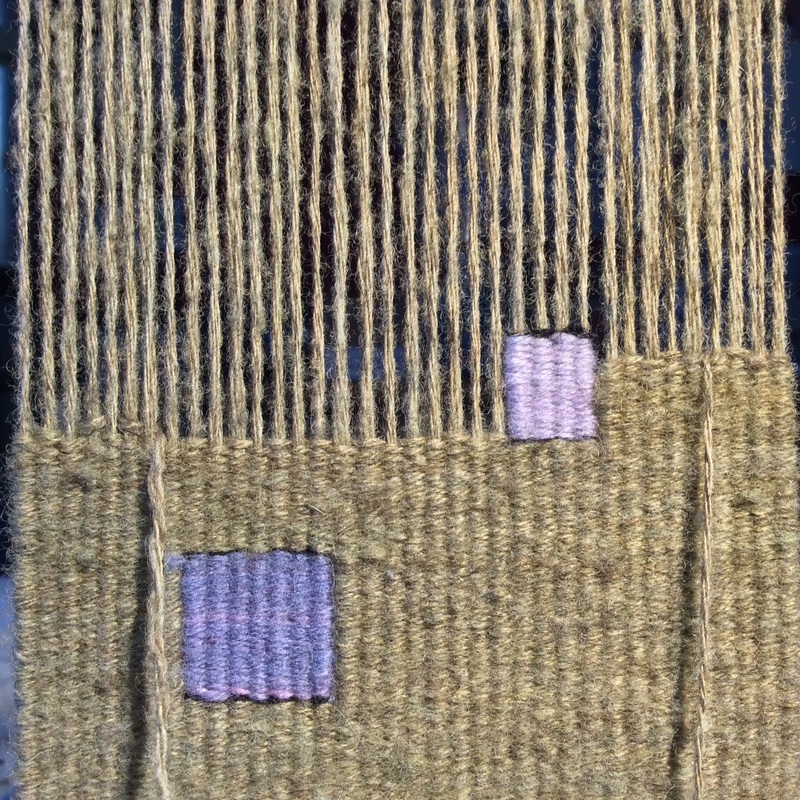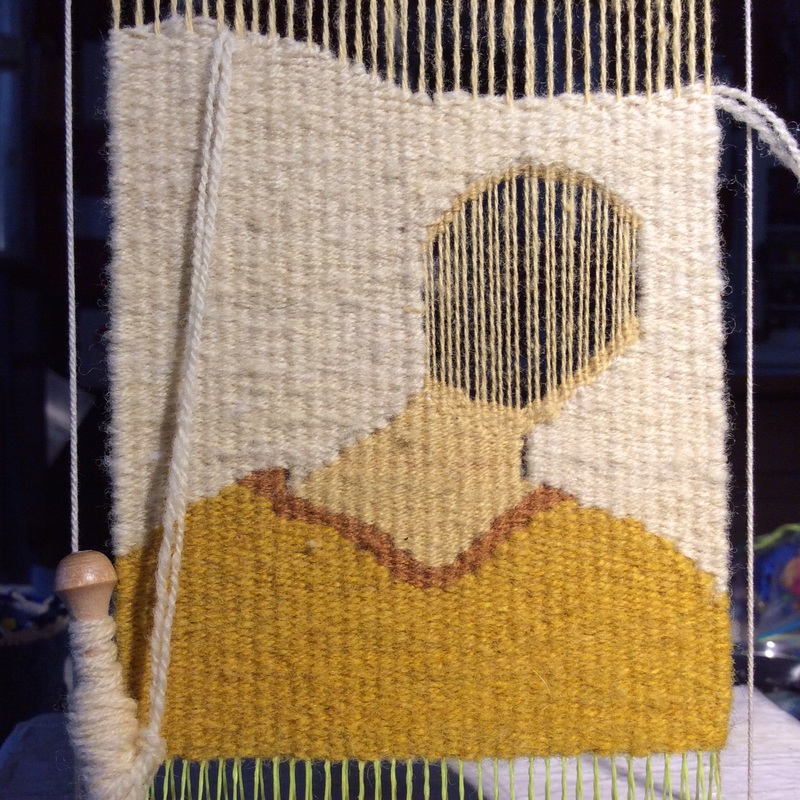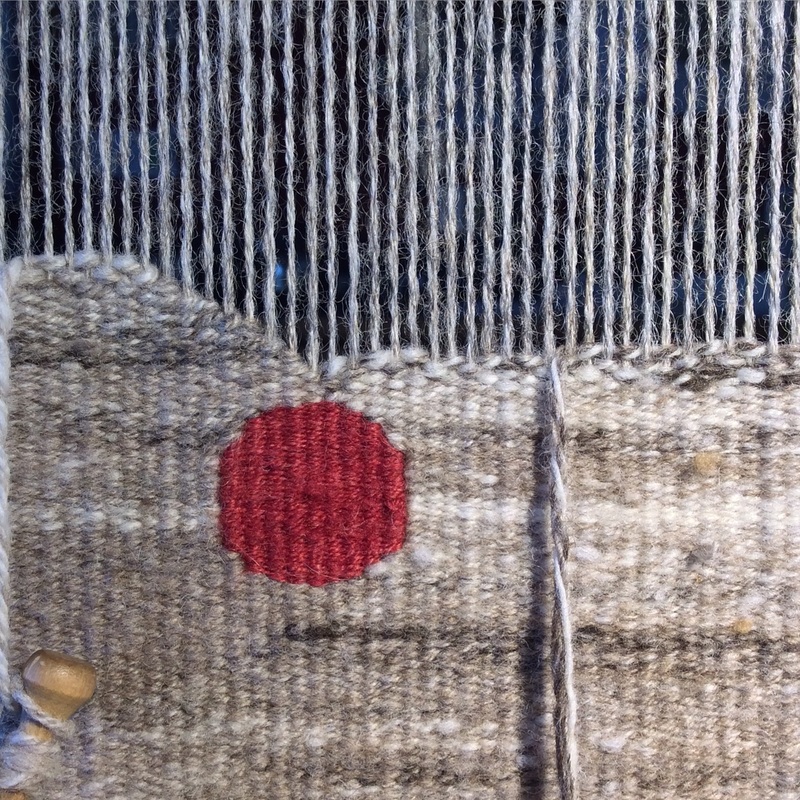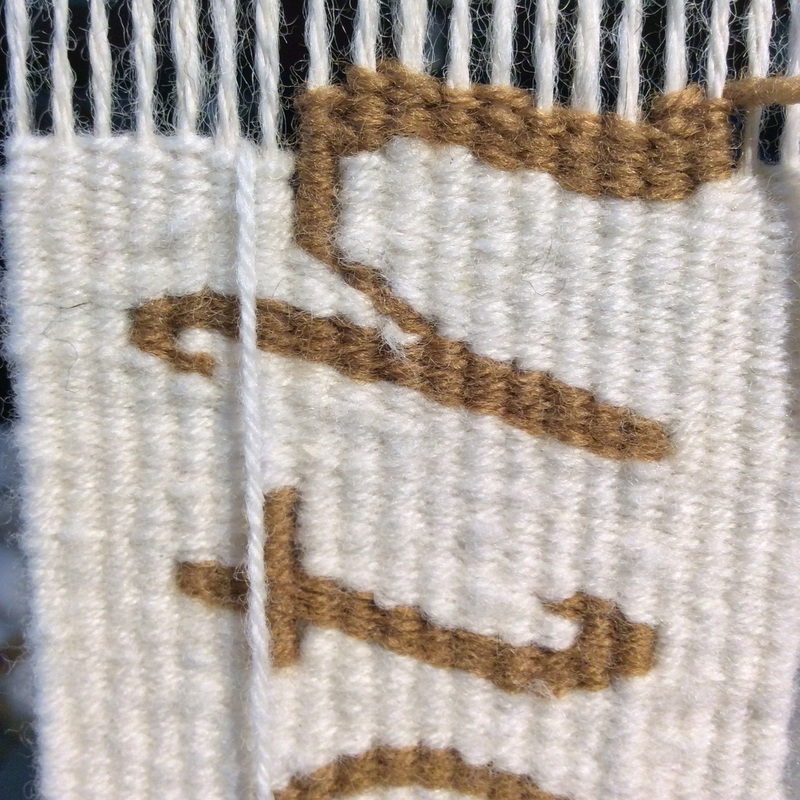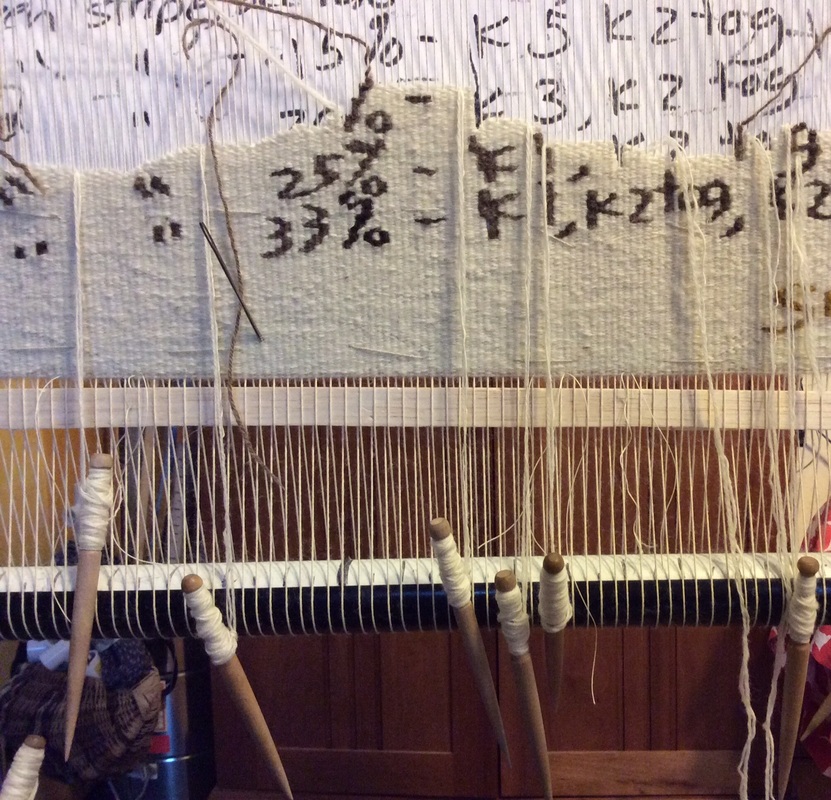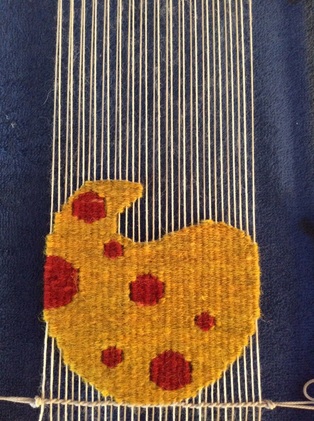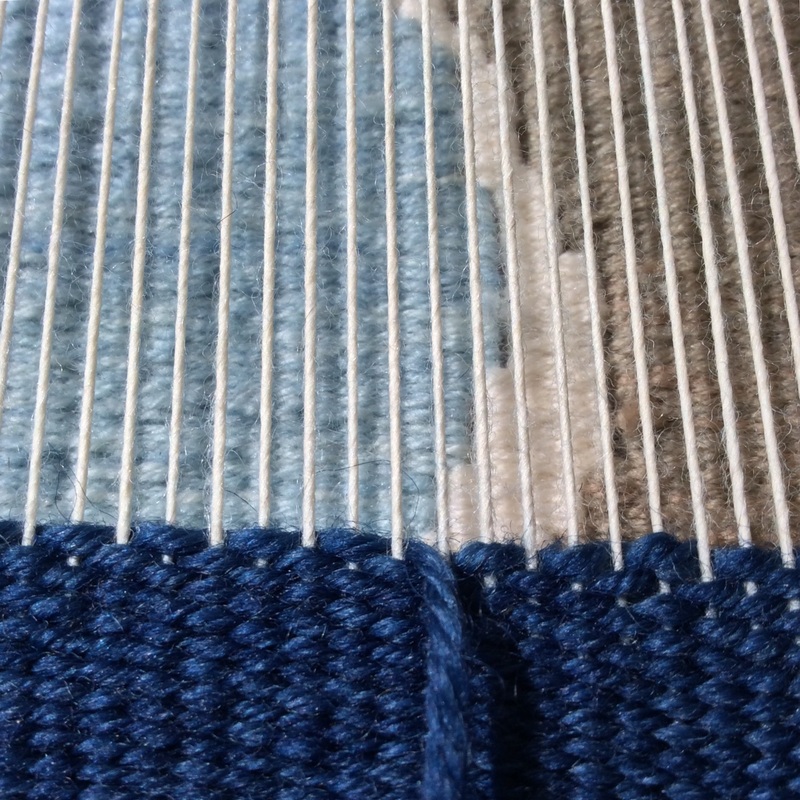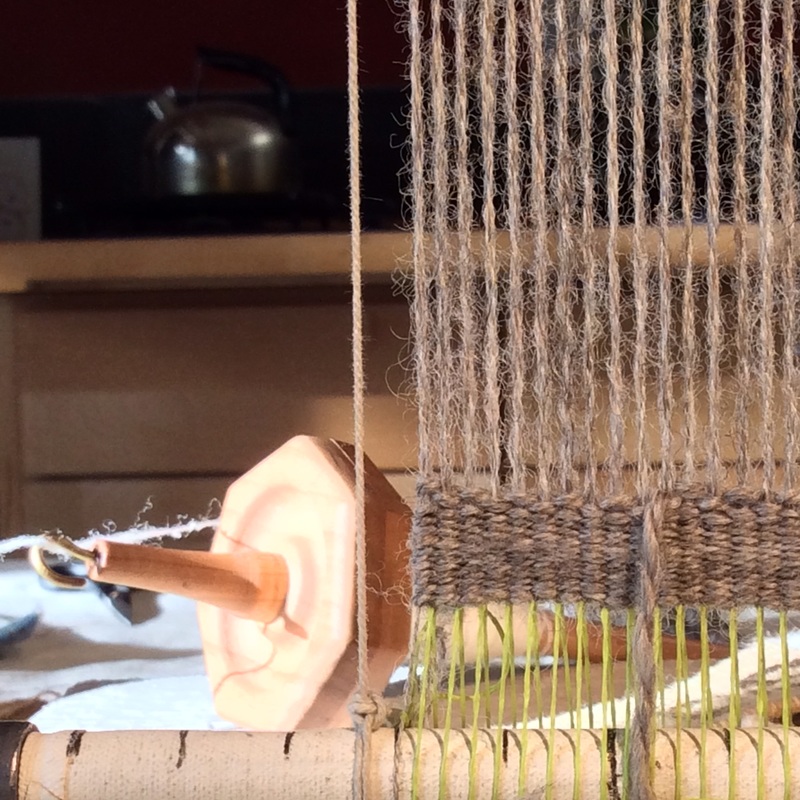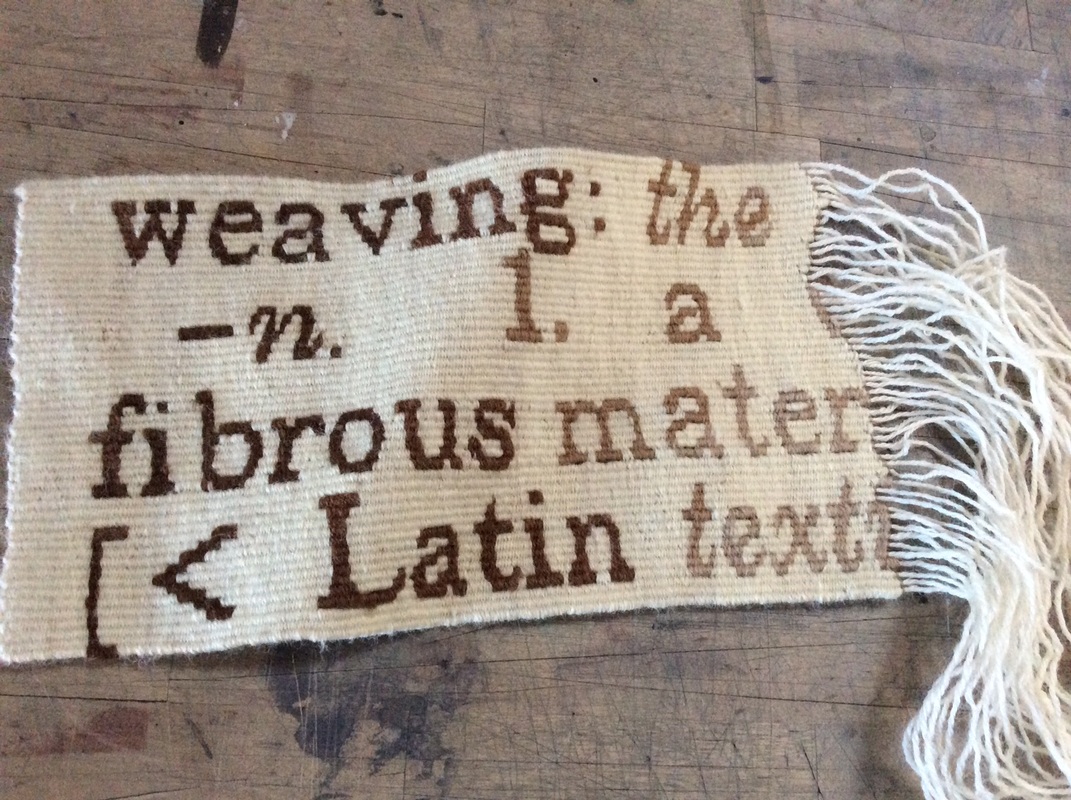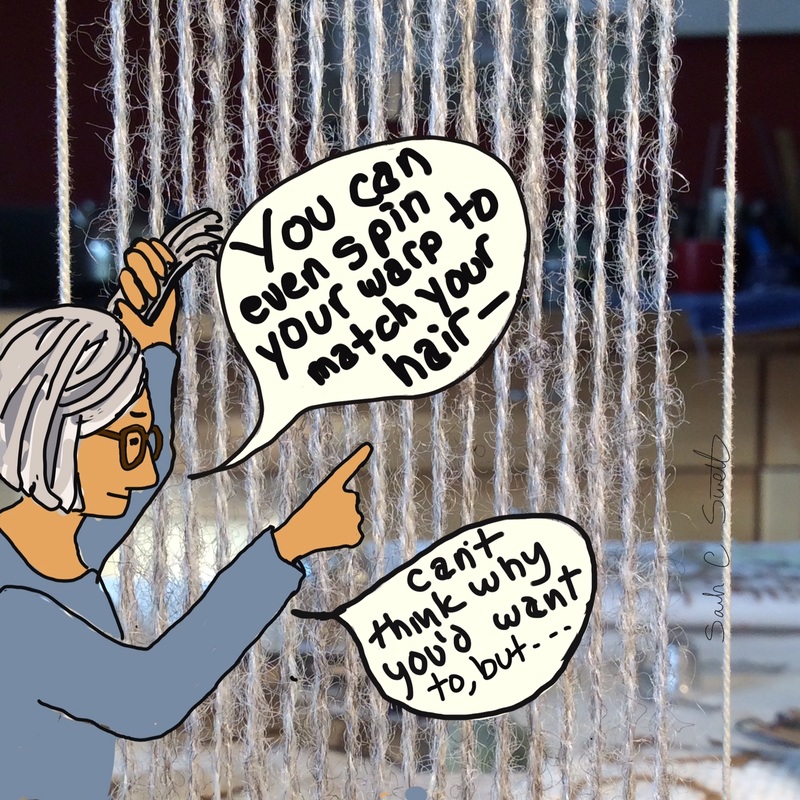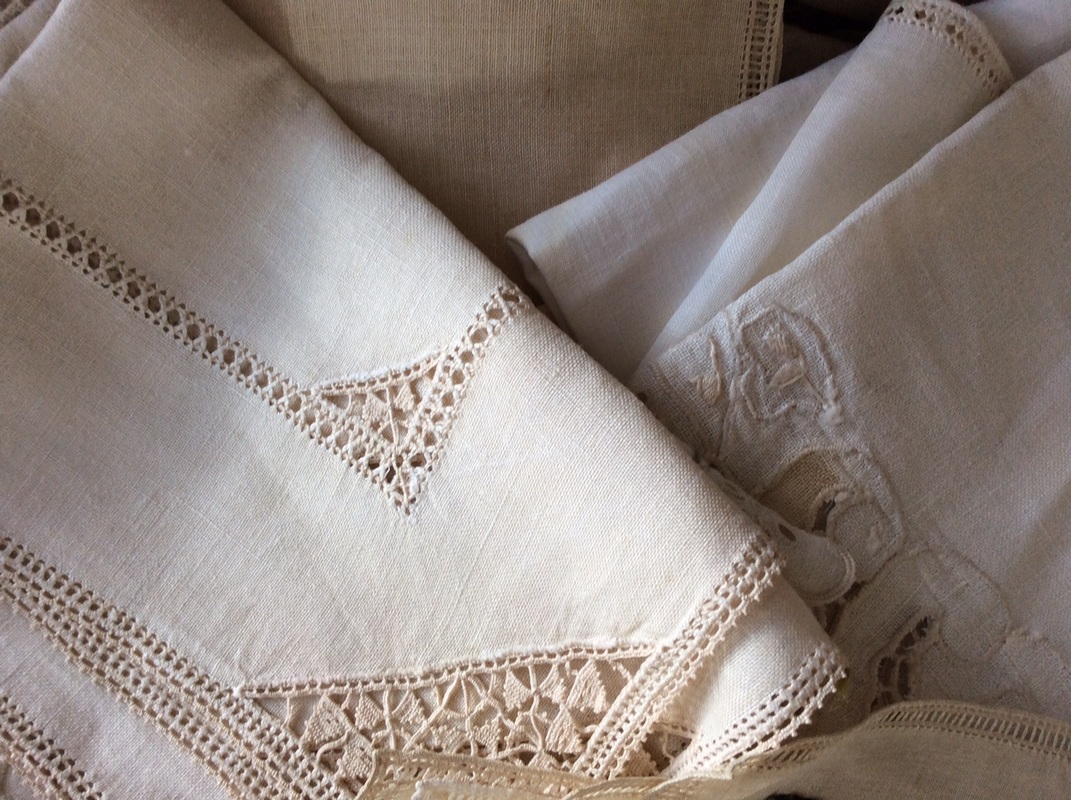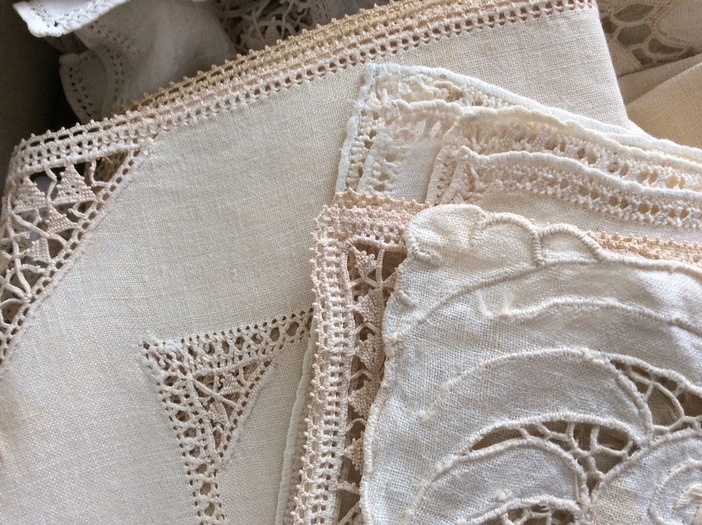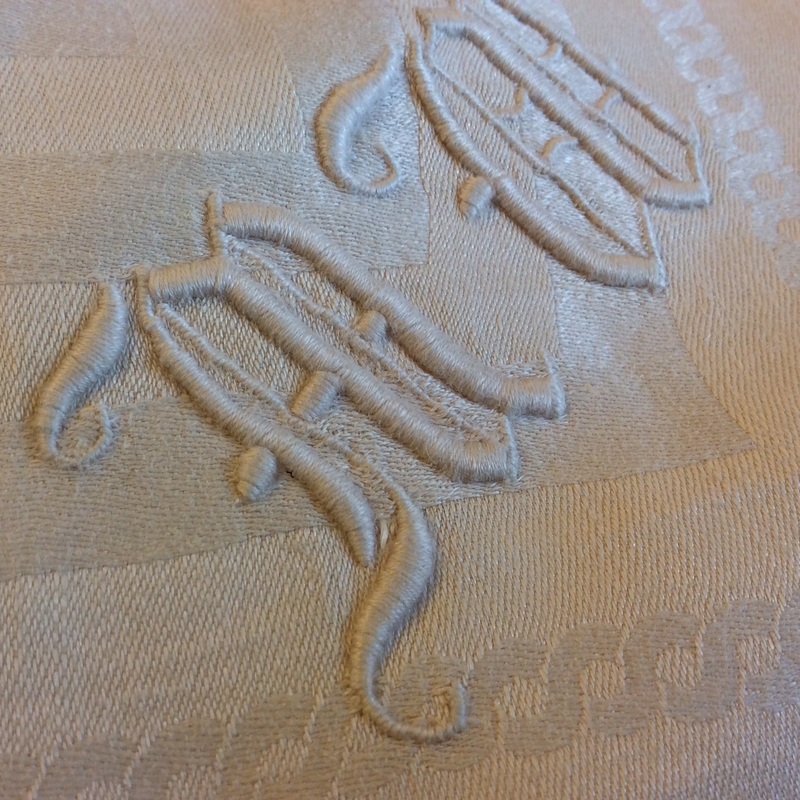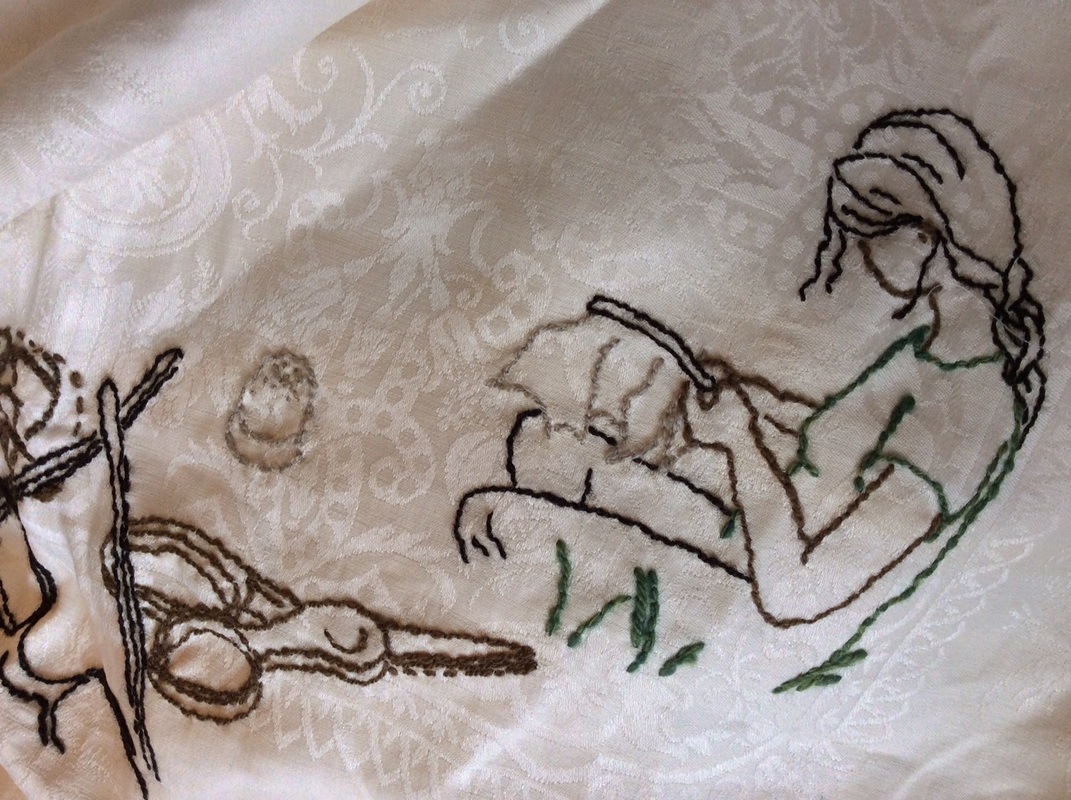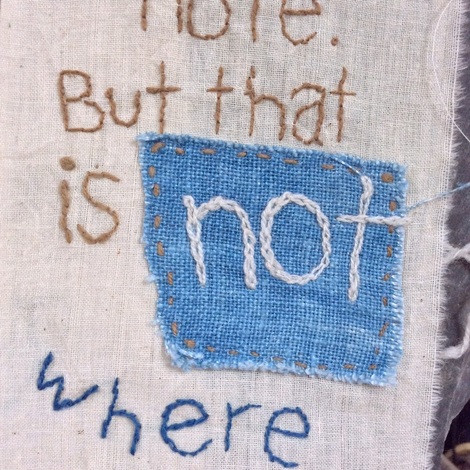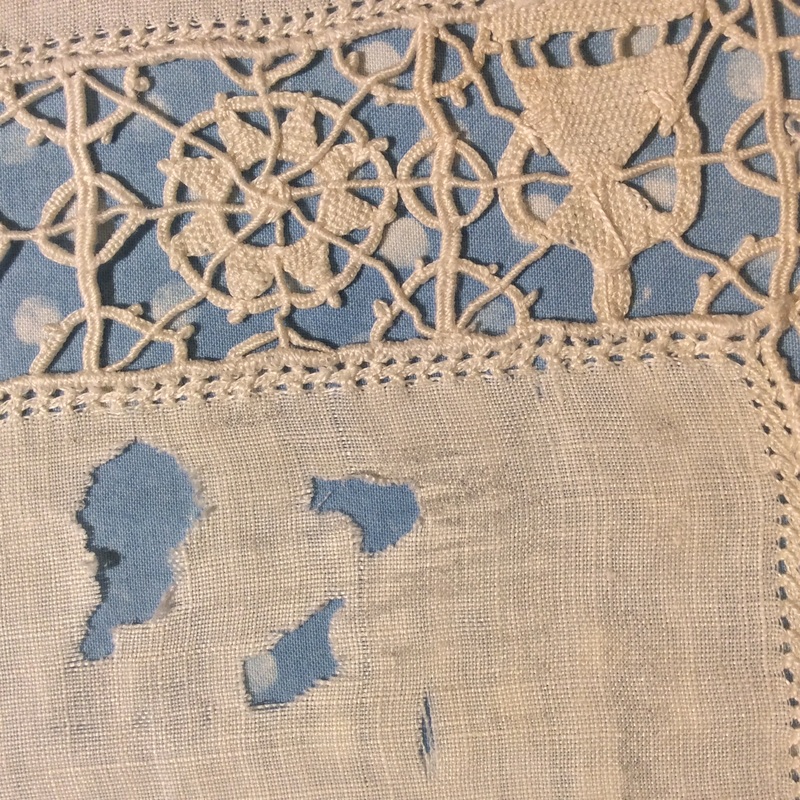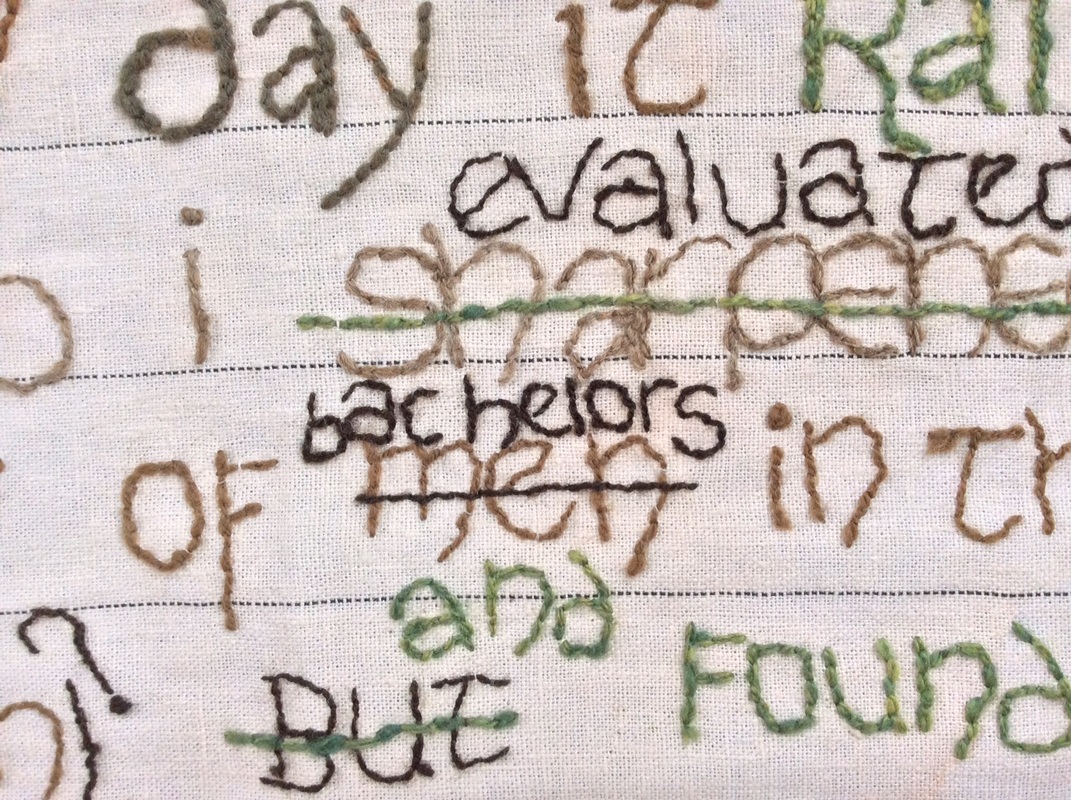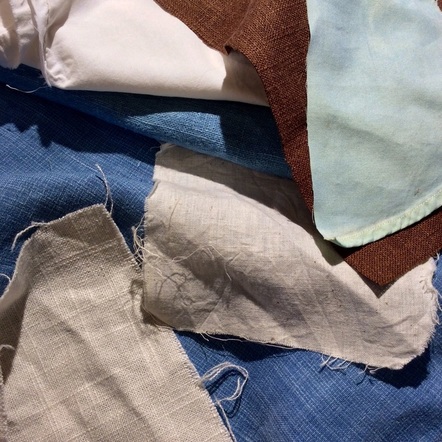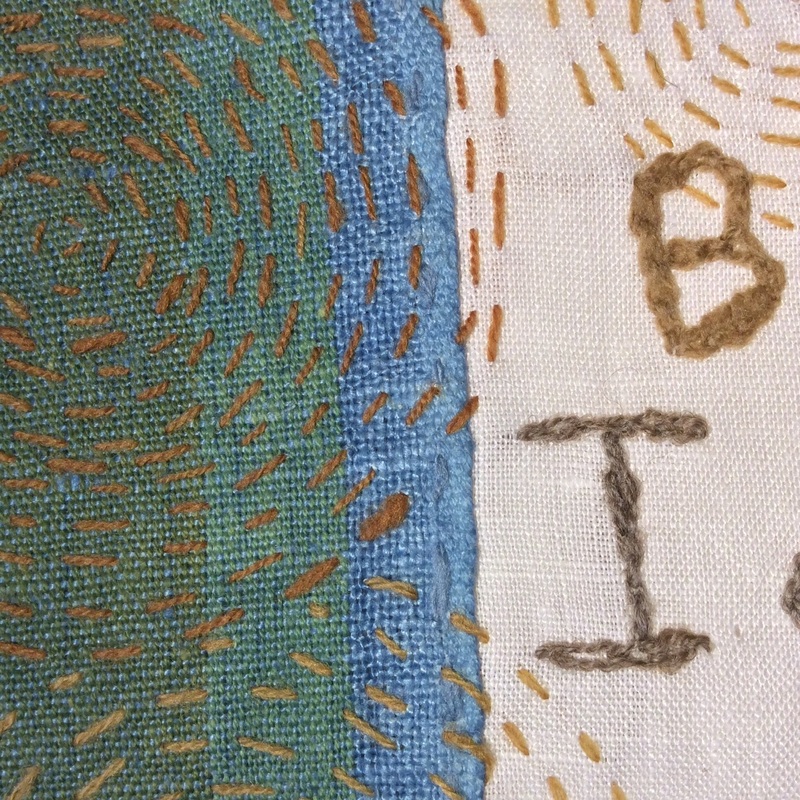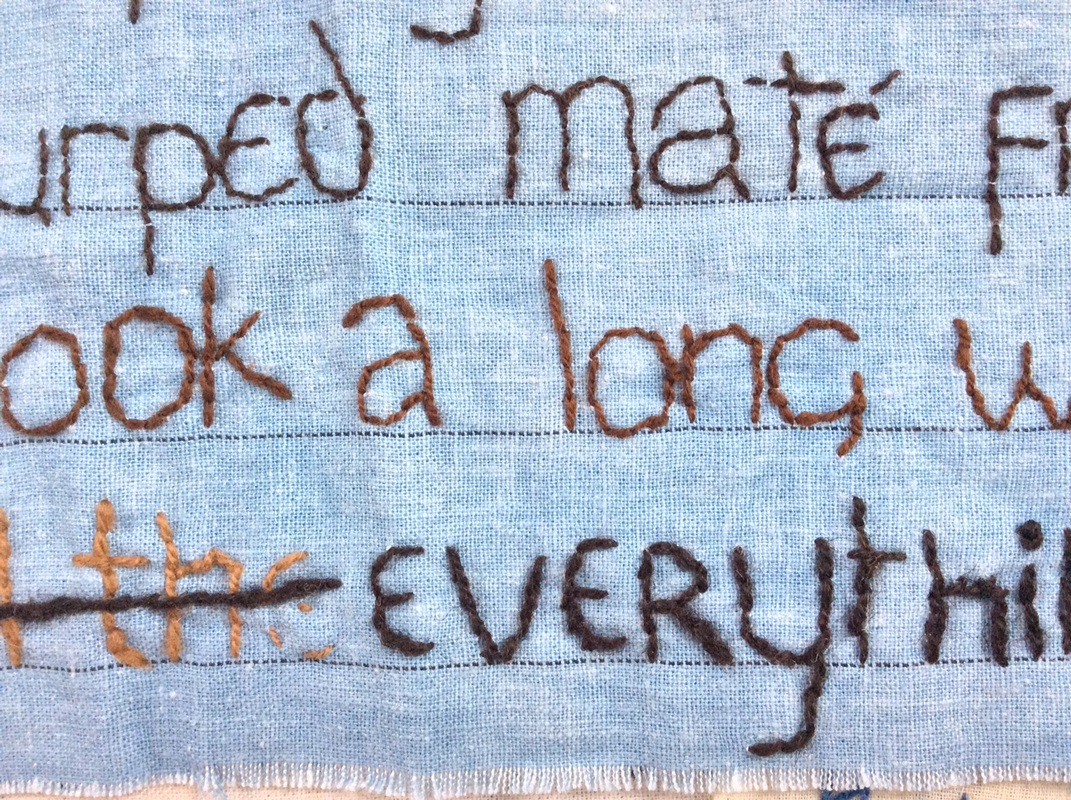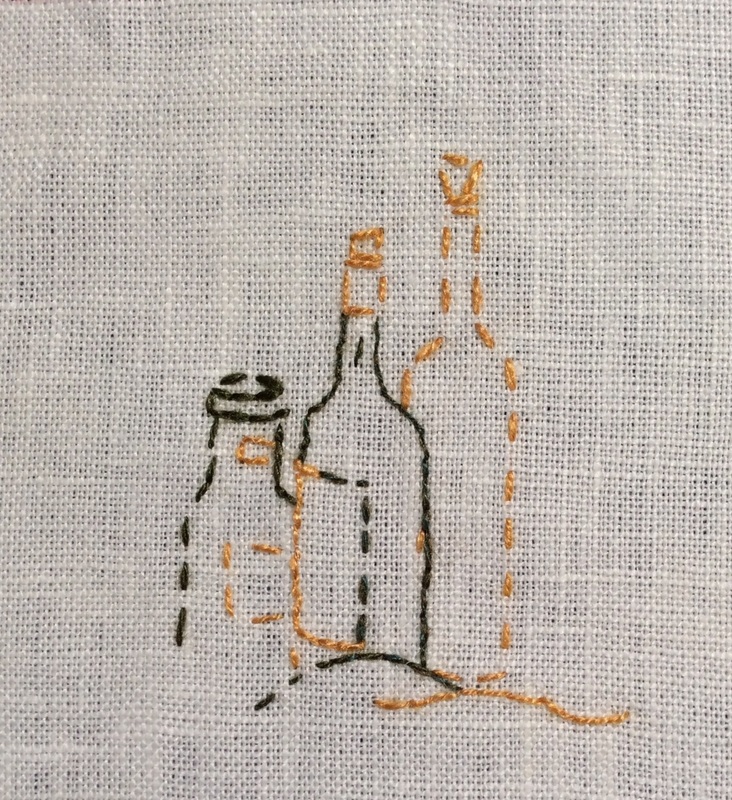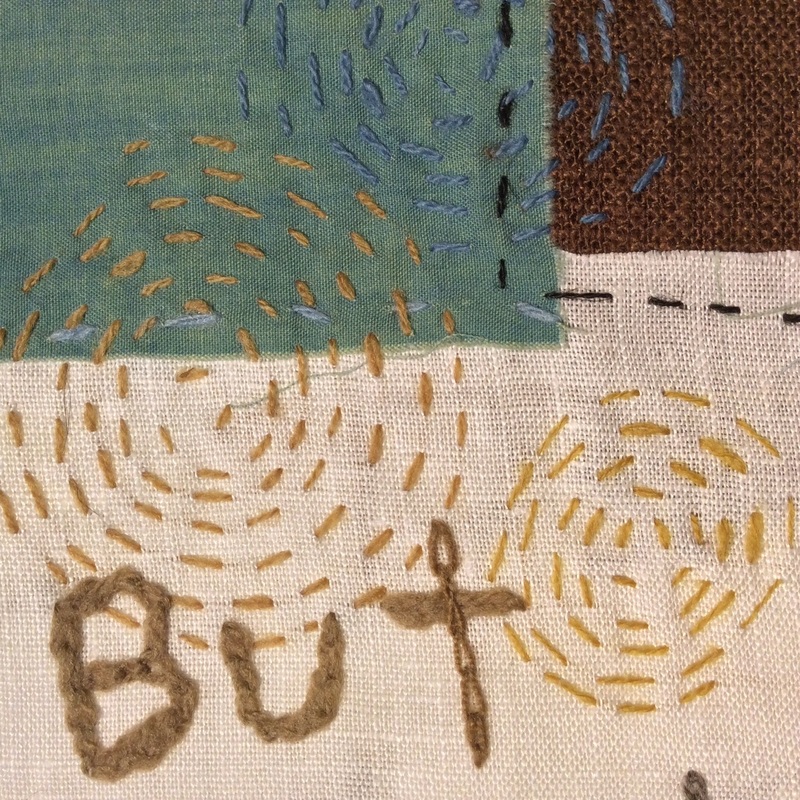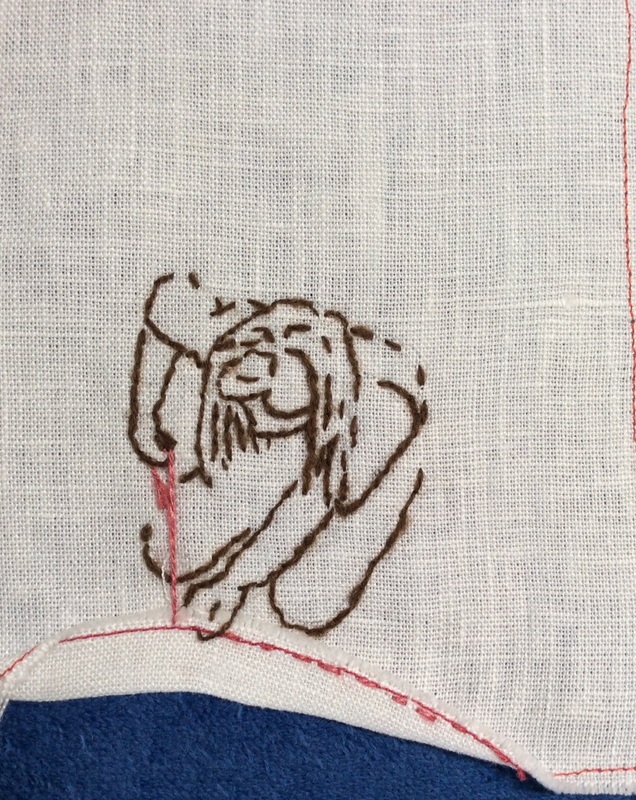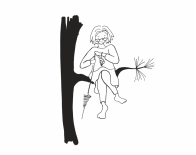Decide if you can bear to sully its inherent perfection
with another medium.
Sometimes I can't.
Sometimes I must.
I have never liked mixing my media.
(Never Mix Never Worry...)
But as I've mentioned before,
some ideas are hell bent on having their way.
1. Draw , or trace a drawing, onto rice paper.
Note: It'd be nice if I could specify what kind of rice (or maybe mulberry) paper,
but I'm using scraps left over from some else's printing class
and it is unlabeled. Perhaps you can tell by looking?
At any rate, it is semi-translucent, flexible and strong..
In my first experiments I used cheap tracing paper
but it crumbled beneath my needle.
I read somewhere that tissue paper works, but don't have any.
2. Baste the sketch to the tapestry with thickish cotton thread
-- something that is strong, easy to see and easy to pull out--
then start stitching along the lines of your sketch with wool yarn and running stitch.
but stay just under the top surface .
one shape at a time. Bigger shapes are easier than small ones.
This is a fiddly process. Tweezers can be helpful.
and the shapes filled in.
I generally pause at this point.
In love with the simple dotted lines
it sometimes takes a day or two before I'm ready to 'color in' the shapes.
though as you can see below, it shows through if I've not been super careful
Also note the slight drawing in of the tapestries where there is lots of embroidery on the other side.
but find less is generally more to my liking.
In the image below, a few solid lines
and a little detached buttonhole stitch
was all that was required.
this project has been compelling and refreshing
-both the weaving and and the stitching-
but now I have to pause,
take stock of the 40+ little tapestries I've accumulated in the last months
and figure out how on earth I'm going to mount them (or at least some of them)
for my show in June.
Honestly, I have only the vaguest of ideas,
but, as ever, not knowing is the fun of it all.
Or it will be once I start messing around.
I think.
Here are some links :
The Subversive Stitch by Rozsika Parker
Celebrating The Stitch by Barbara Lee Smith
Hand Stitch Perspectives and Machine Stitch Perspectives
both by Alice Kettle and Jane McKeating
Also a monograph on the artist Audrey Walker that I think I got from the Selvedge magazine bookstore, but am not sure.
In making these links (and I apologize for using Amazon, but it is an easy way to get the information across) , I see that my copy of Subversive Stitch is out of date as it has been re-issued with new material, a new cover and a new high price. Also, Celebrating The Stitch can be had for one American Penny (plus shipping).
In going through my book collection, I found that I have more books on stitching than I have on tapestry weaving, but more catalogs of tapestry exhibitions. This probably just means that there ARE more books about stitching than tapestry, and more embroiderers than tapestry weavers. But does it also mean that there are more tapestry exhibitions?
Probably not.
What are your favorites? Do tell!!
